NOTICE TO READERS: Today’s post is quite long and mostly about movies.
Michael wanted to take it easy the first half of the day in Lyon, so I walked to the Basilique Notre Dame de Fourvière and Théâtre Gallo Romain de Lyon-Fourvière by myself then met Michael at the funicular.
One of the first things I saw on my walk was the Place des Jacobins, a square located in the 2nd arrondissement of Lyon. It was created in 1556. It lies on a former Jacobin convent, which was destroyed in 1808. It is named after the Jacobin monks, who resided in the building. The white marble fountain standing in the middle of the square was sculpted in 1885 by Gaspard André. It represents four famous local artists and has four sirens.
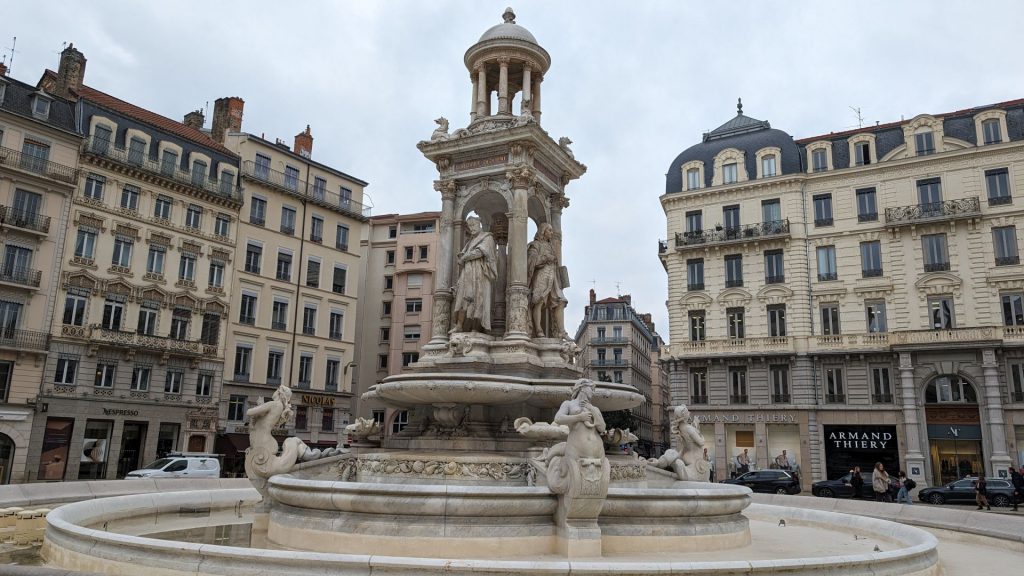
Another thing that caught my eye was this statue. I didn’t know what it was but it was intriguing, so I took a picture. I have since learned that it is called The Weight of Oneself. A marble figure almost three meters high, it appears to be a savior. But upon closer reflection you can see that the man is carrying his double, and in so doing becomes his own savior but also his own millstone. These philosophical concerns echo the questions of civil and individual responsibilities which are debated every day in the nearby Palais de Justice. The artists are Michael Elmgreen & Ingar Dragset.
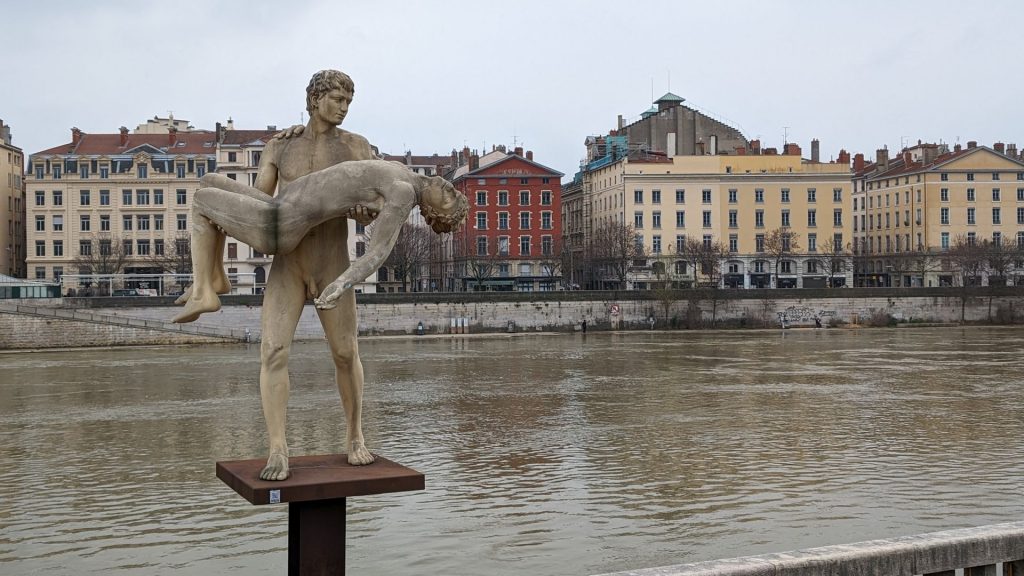
Speaking of the Palais de Justice, here is a picture of it with Notre Dame behind it, up the hill. This fully functioning courthouse is home to the Rhône Assize court and the city’s Court of Appeals.
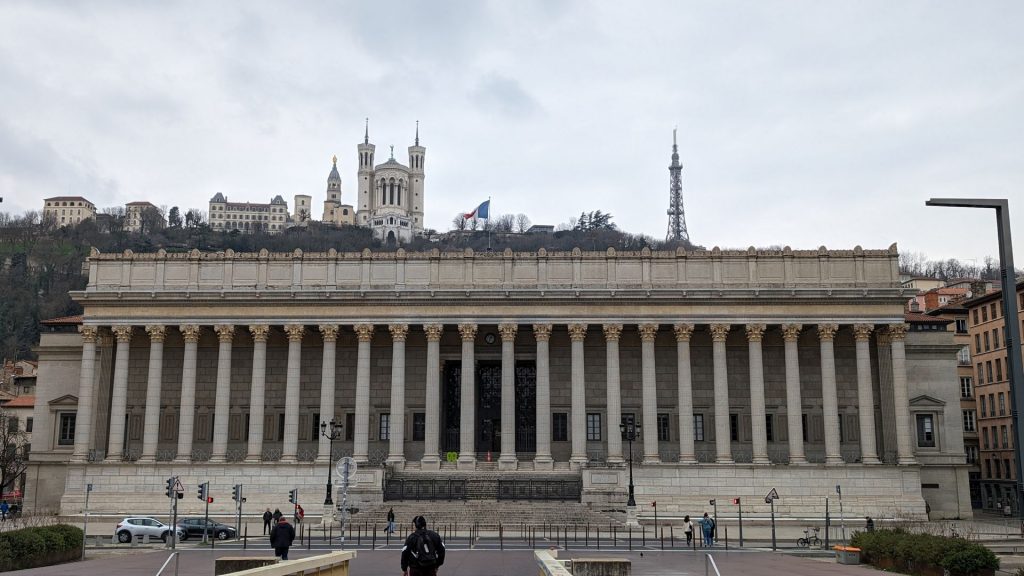
The Ancient Theatre of Fourvière is part of a UNESCO World Heritage Site. It was built in two steps: around 15 B.C., a theater with a 90 meter diameter was built next to the hill. At the beginning of the 2nd century, the final construction added a last place for the audience. The diameter is 108 meters, and there were seats for 10,000 people. Today the theater is primarily a tourist site, but it is still used as a cultural venue.
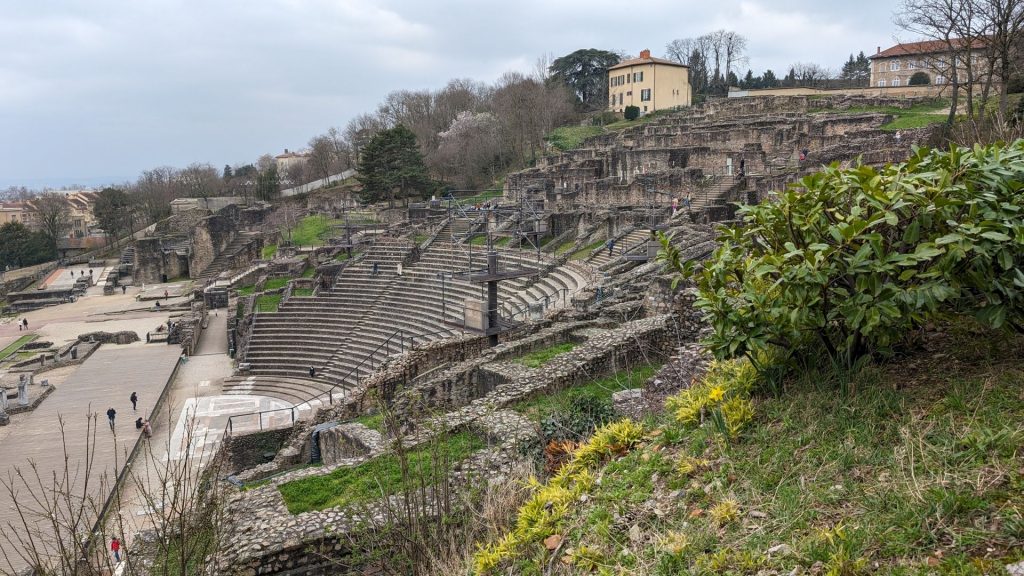
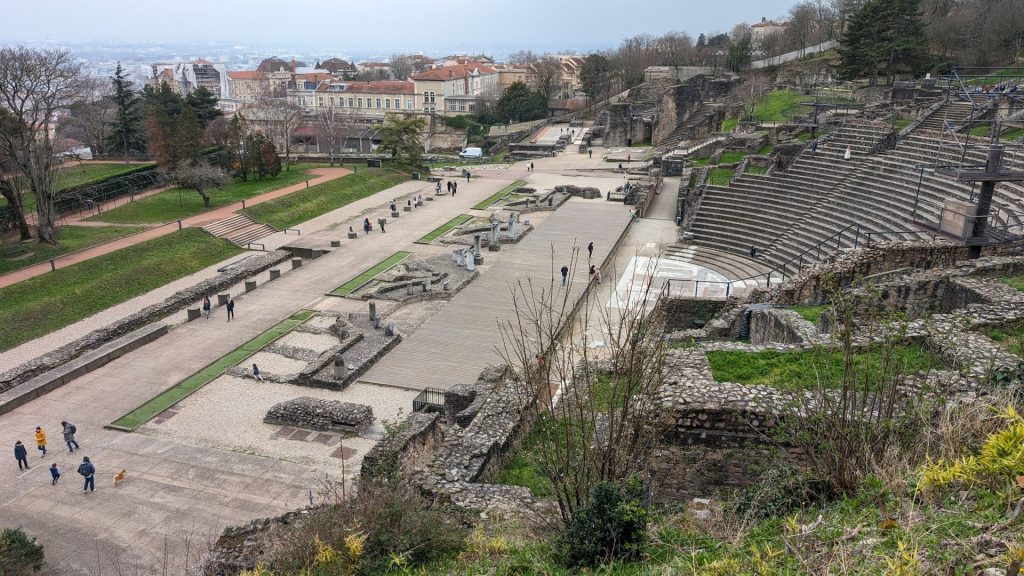
The Basilique Notre Dame de Fourvière is just a short walk from the theater. The basilica is the work of architects Pierre Bossan and Sainte-Marie Perrin. It was built in 1872. The basilica is dedicated to the Virgin Mary and is listed as a historical monument, registered to the UNESCO World Heritage Site.
Excerpts from https://www.fourviere.org/en/discover/notre-dame-de-fourviere/basilica-2/:
The basilica is 86 meters long and 35 meters wide. It offers a unique architecture with a byzantine, gothic and Romanesque inspiration. It has four towers, 48 meters high, which represent the cardinal virtues :
–Prudence (North-East tower) and Temperance (South-East tower) facing the city of Lyon.
–Force (North-West tower) and Justice (South-West tower) dominating the square.
The inside of the basilica is composed of two churches one upon the other. The higher Church is dominated by three domes and lit by six stained-glass windows. The materials used for the building and the decoration rival in quality and beauty, white marble from Carrara, pink granite from the North of Italy, blue marble from Savoy, green onyx, silver and gold pieces, union of ebony and ivory.
There are eight chapels and the apse is lit thanks to seven high stained- glass windows. On the side walls six large mosaics of 50 square meters, by Charles Lameire et Georges Décote, show the link of Mary to the Church and the relationship of Mary with France.
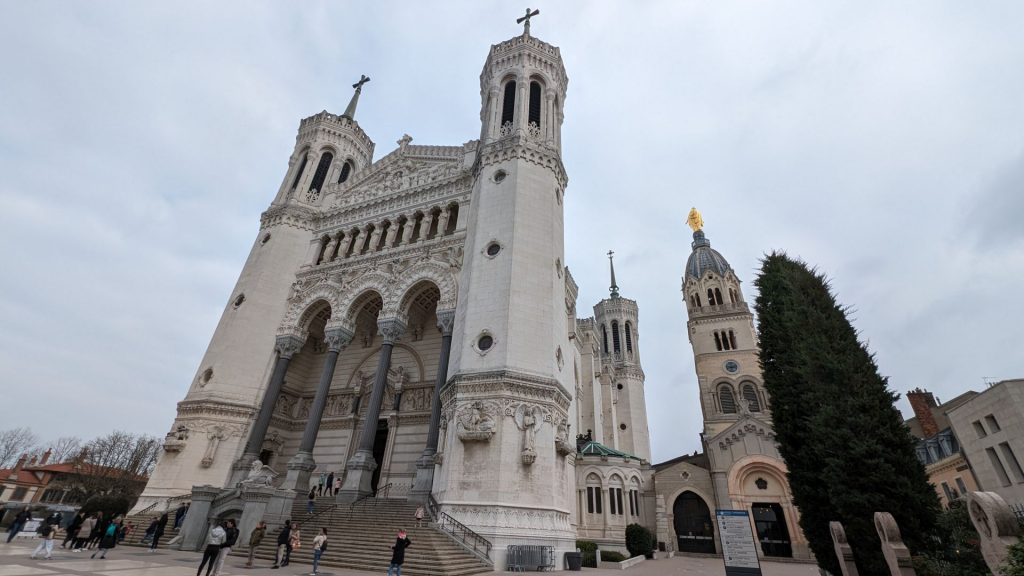
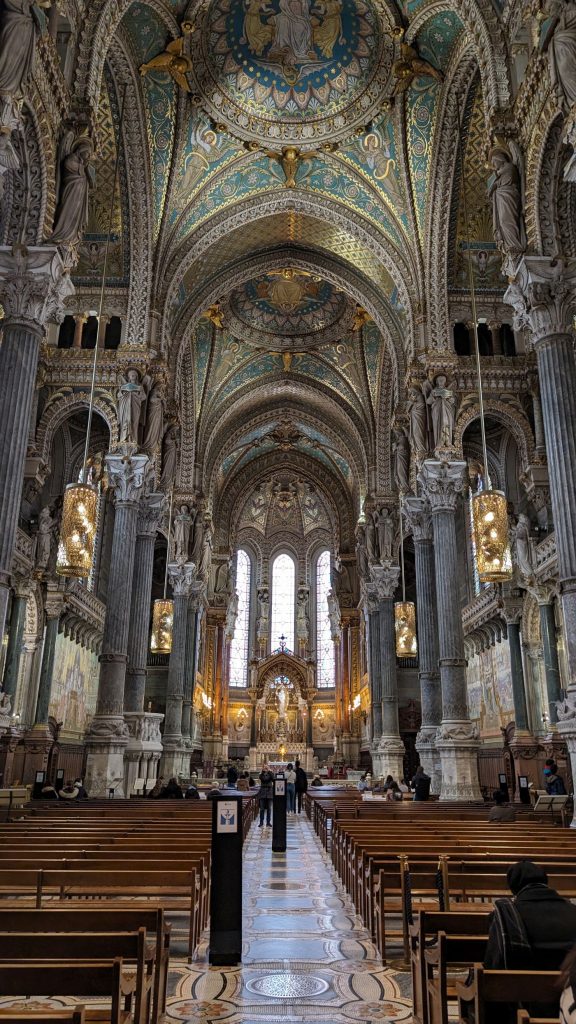
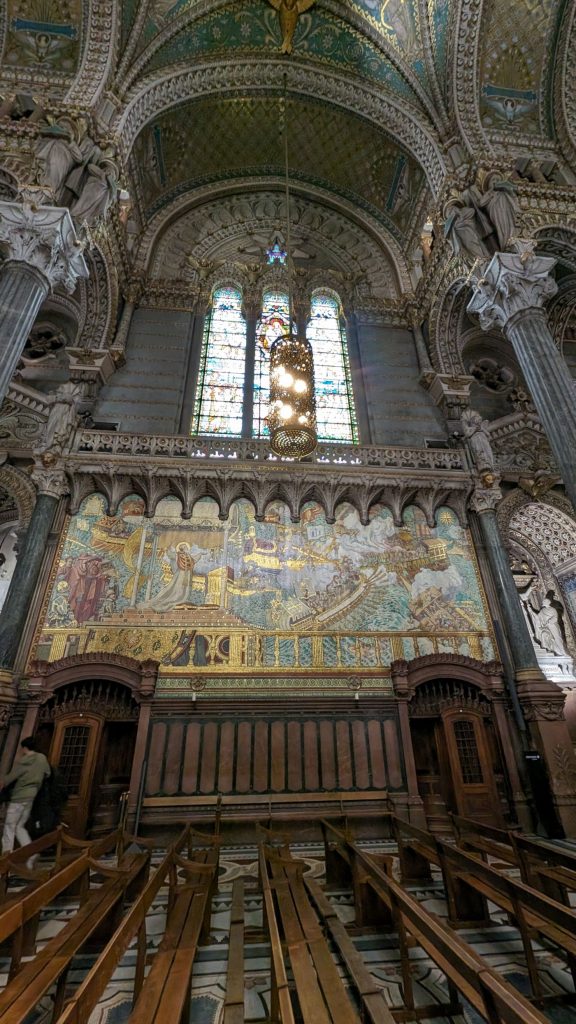
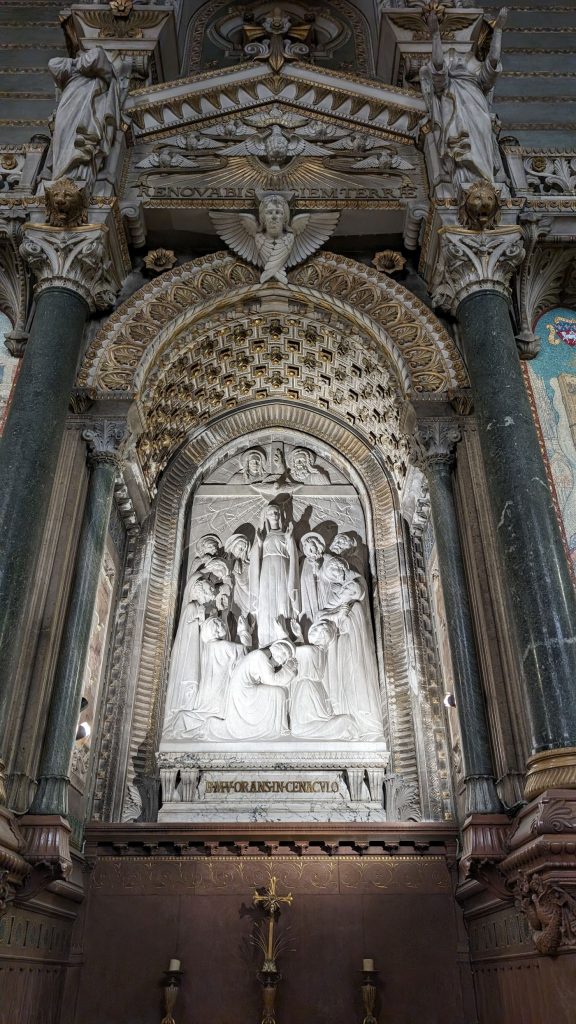
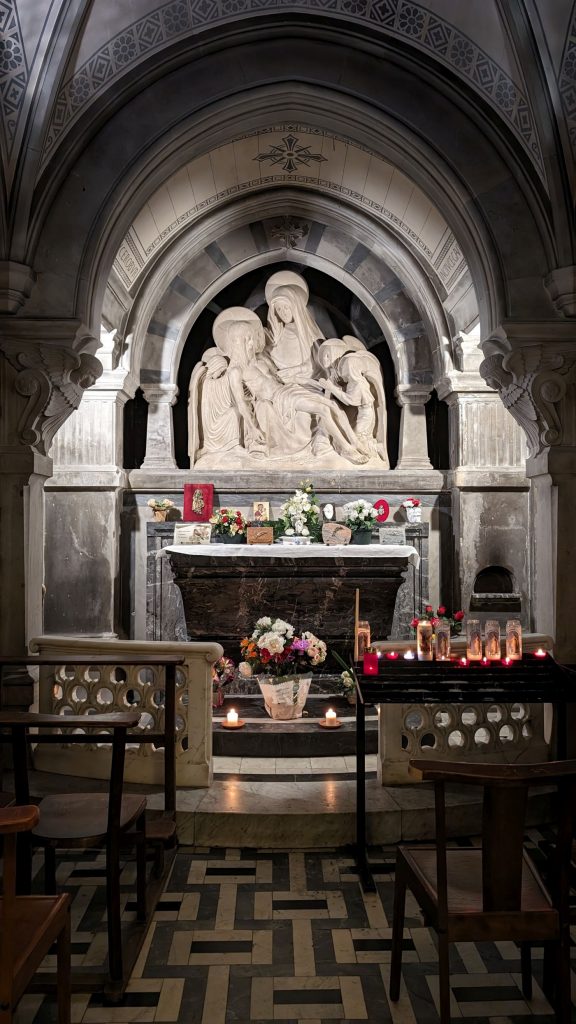
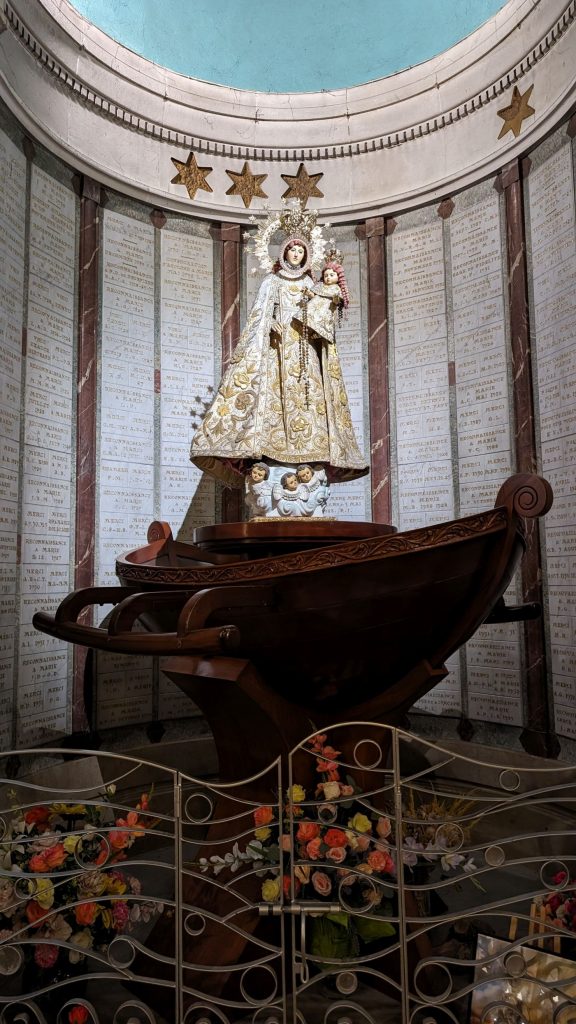
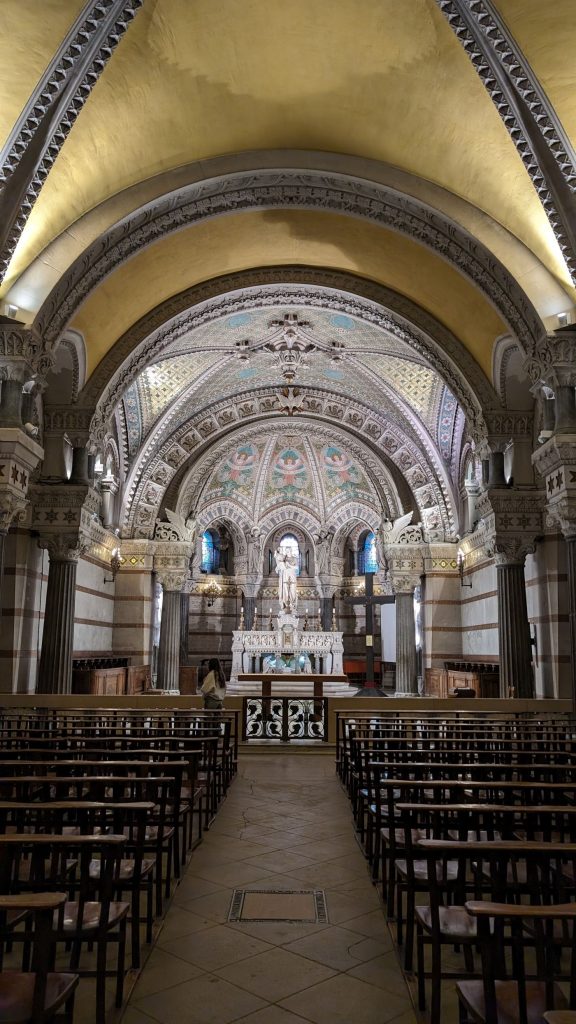
Here are a couple of views of Lyon from Notre-Dame. Do you see the Ferris wheel in the one on the left? That was our first sight when we got to Lyon.
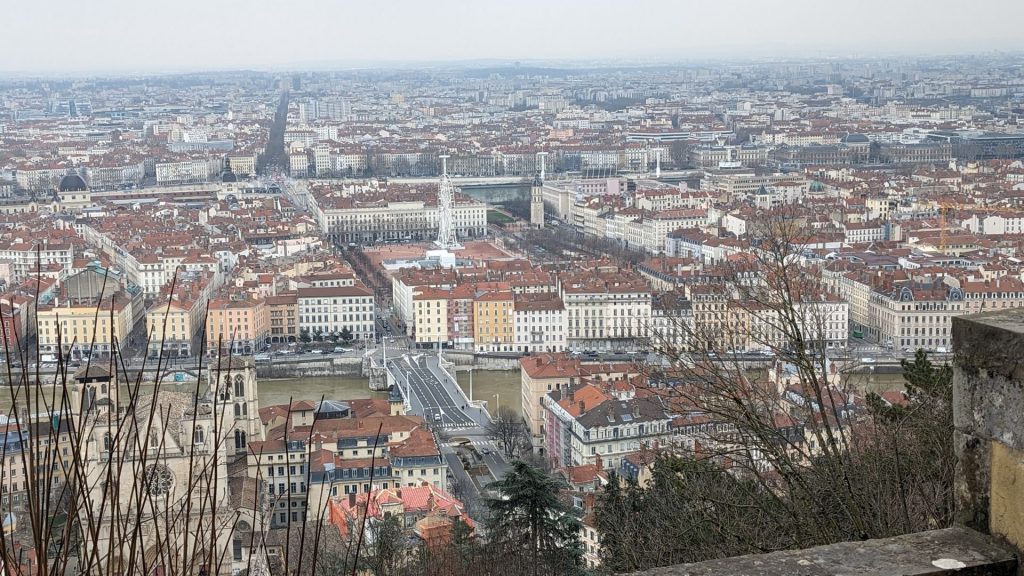
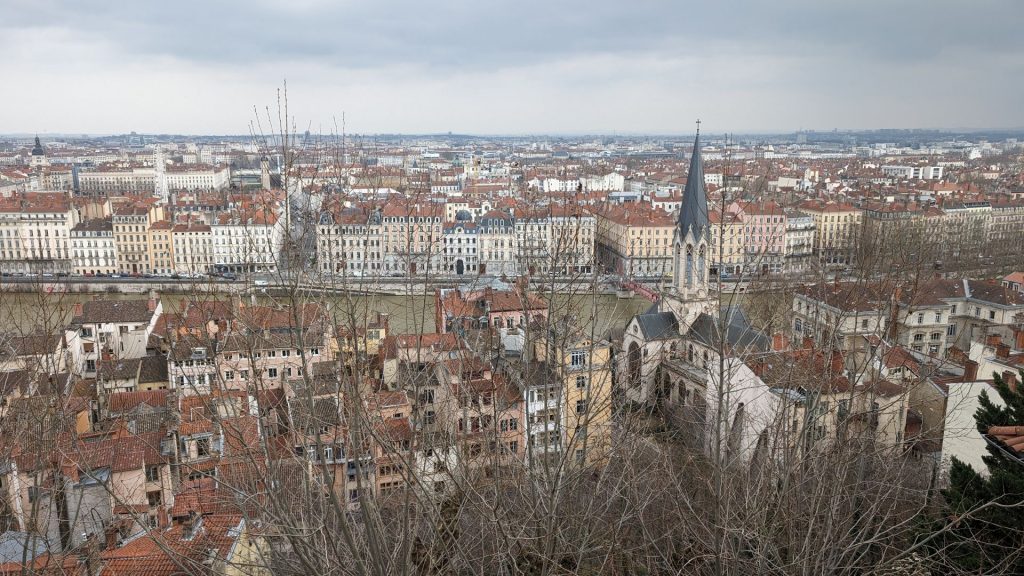
You already know that we try to find “unusual” things to see. I am not sure that the next thing we visited is a top tourist attraction, but it is fun and educational. It is the Cinema and Miniature Museum. From Back to the Future to Star Wars, passing through Mary Poppins, Harry Potter, Indiana Jones, Alien, Matrix, Batman, and even Terminator, the grand history of cinema is illustrated in a UNESCO-listed Renaissance building in the heart of Old Lyon.
The museum has original props, clothing, miniatures, masks, posters . . . you name it and they might have it. There are over 1000 displays from over 300 movies. I learned a lot at this museum! The museum’s founder, Dan Ohlmann, created over 100 realistic miniature scenes, the largest in France. The museum also features miniature scenes by other European and international miniature artists.
The first few rooms are dedicated to the movie Perfume: The Story of a Murderer. They consist of full size reconstructed sets from the movie.
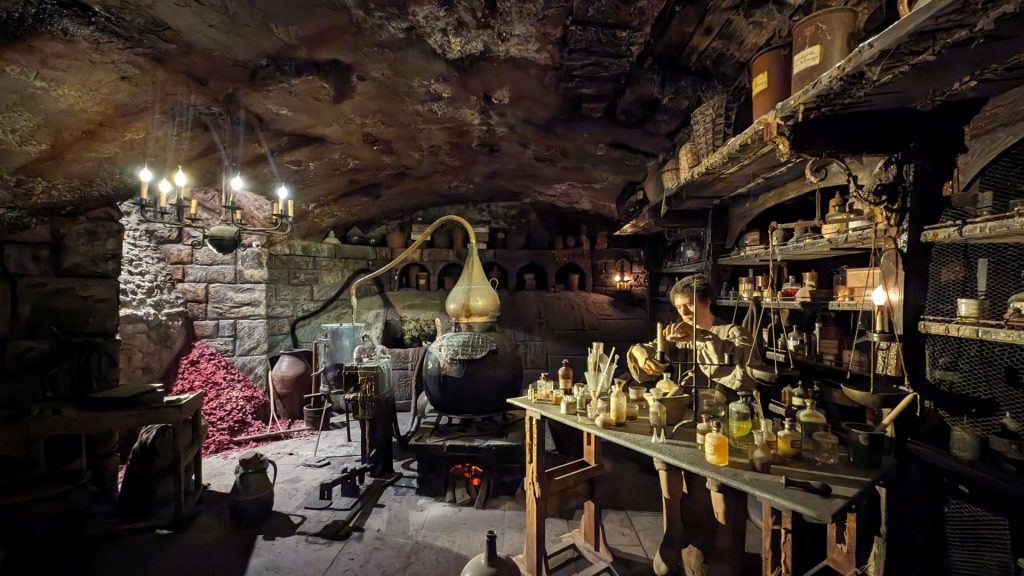
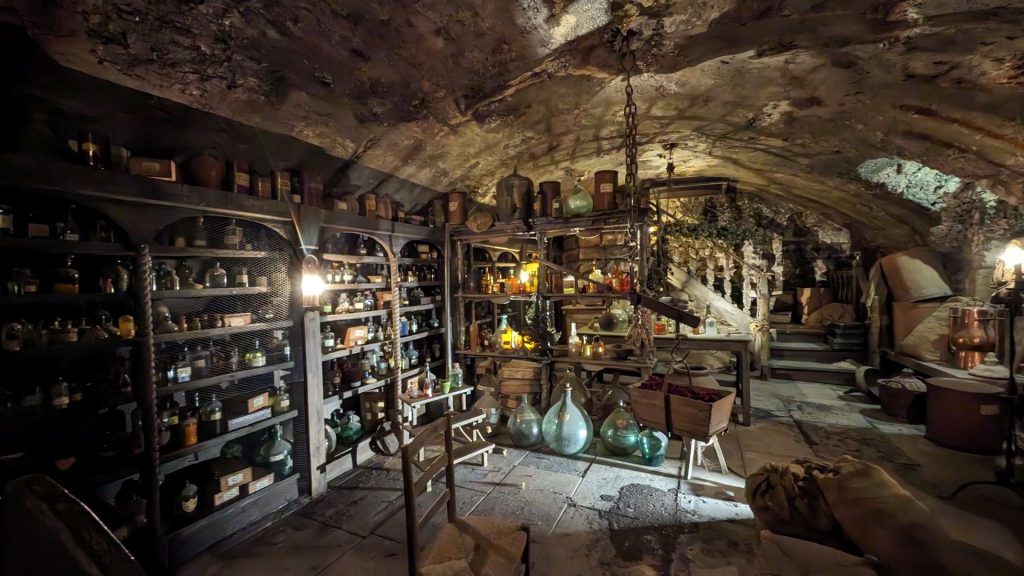
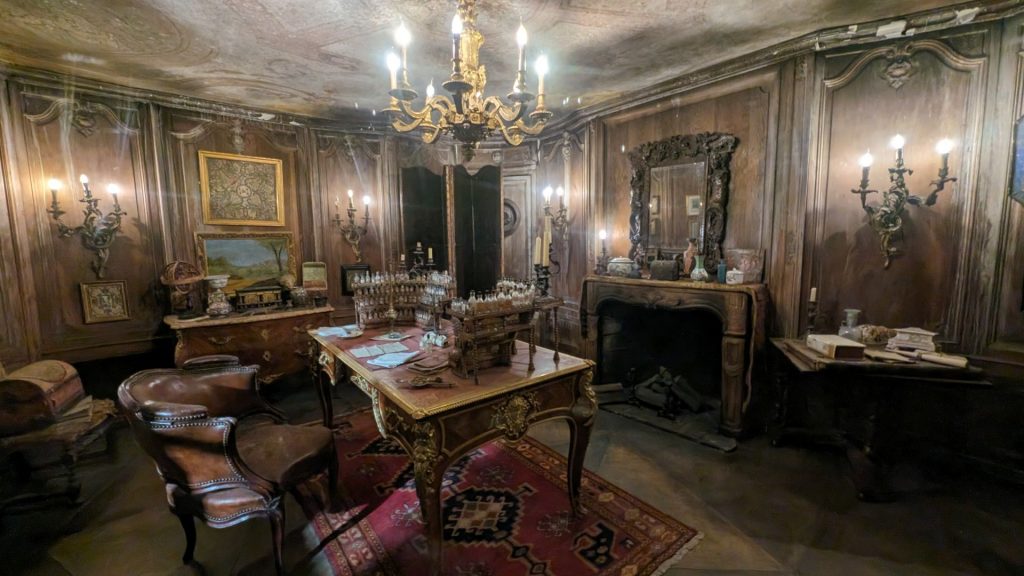
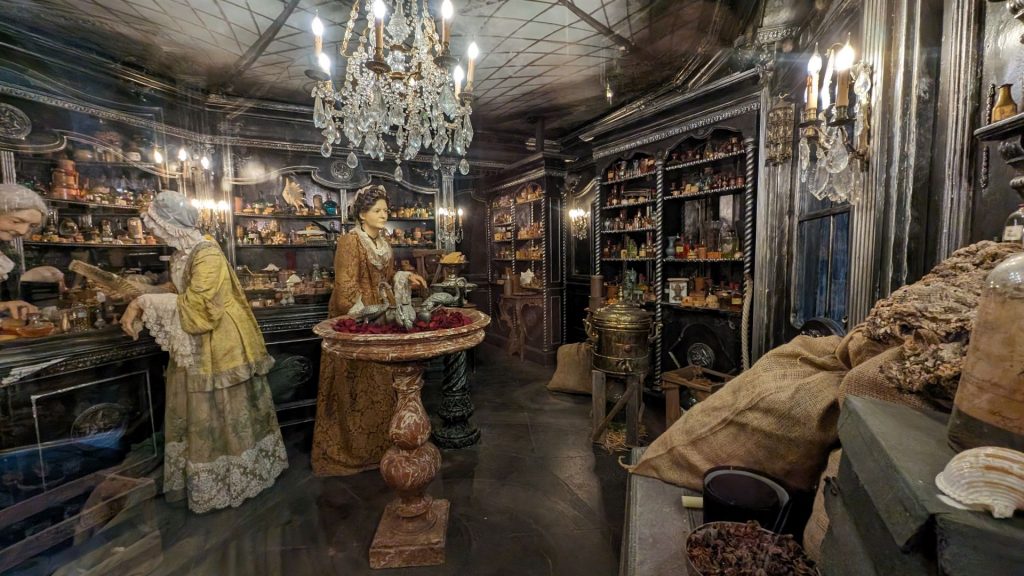
Then, an actual triceratops head from Jurassic Park!!
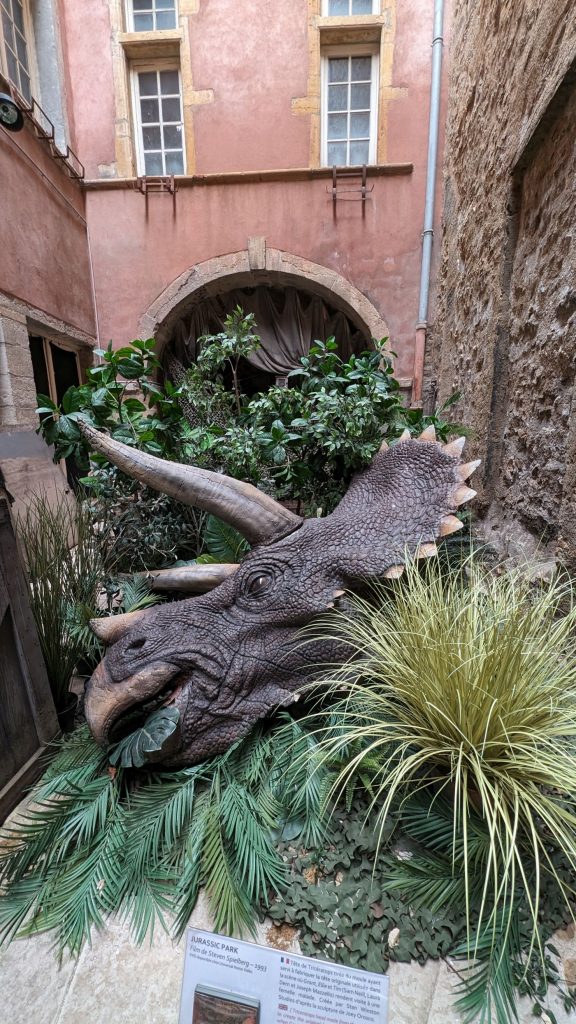
Now let’s move on to some costumes.
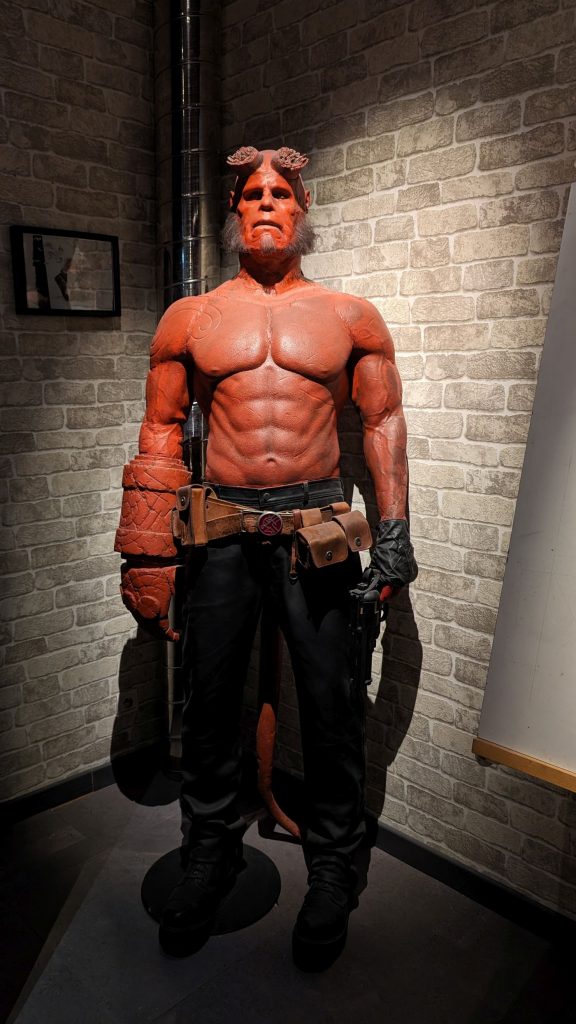
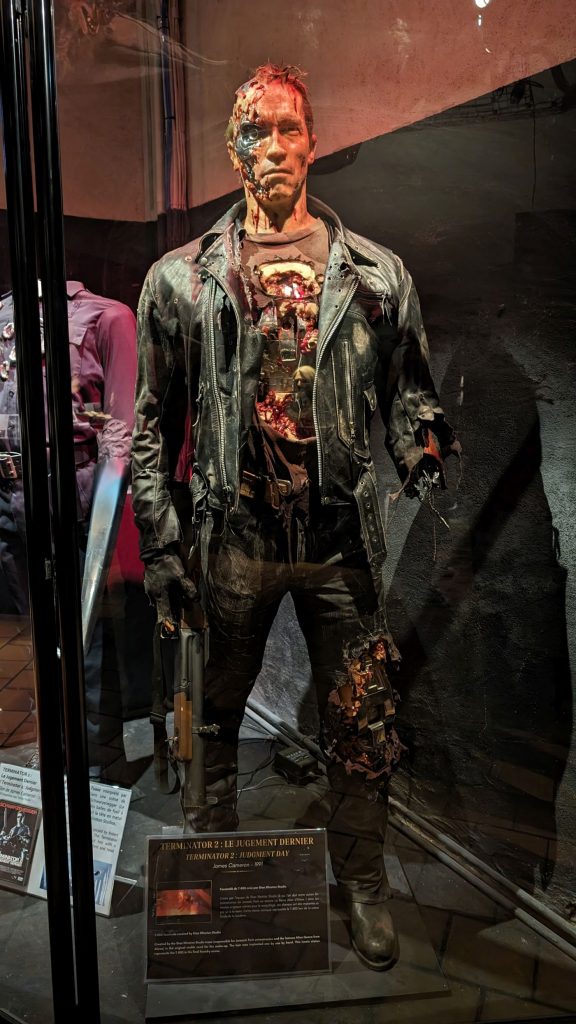
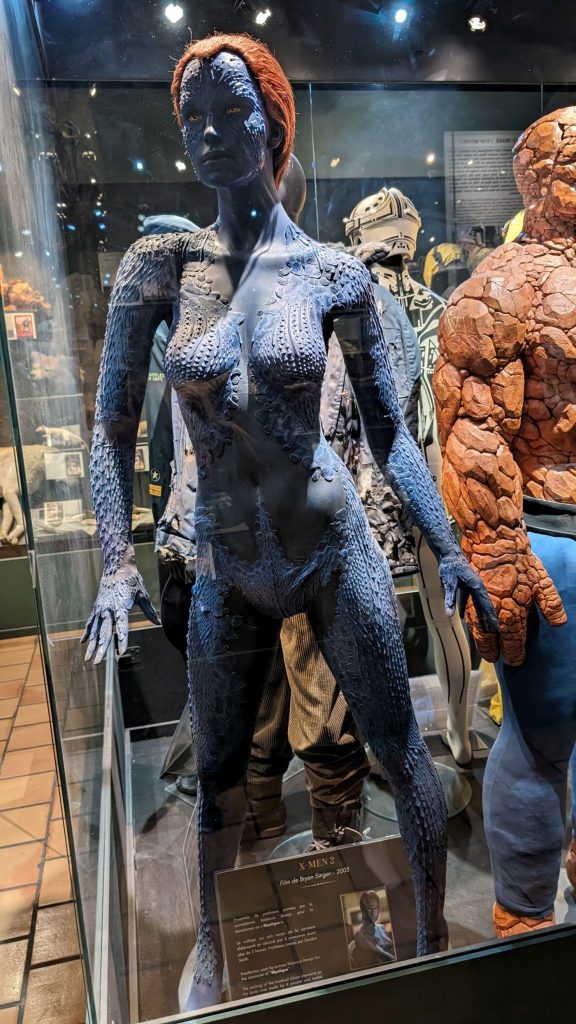
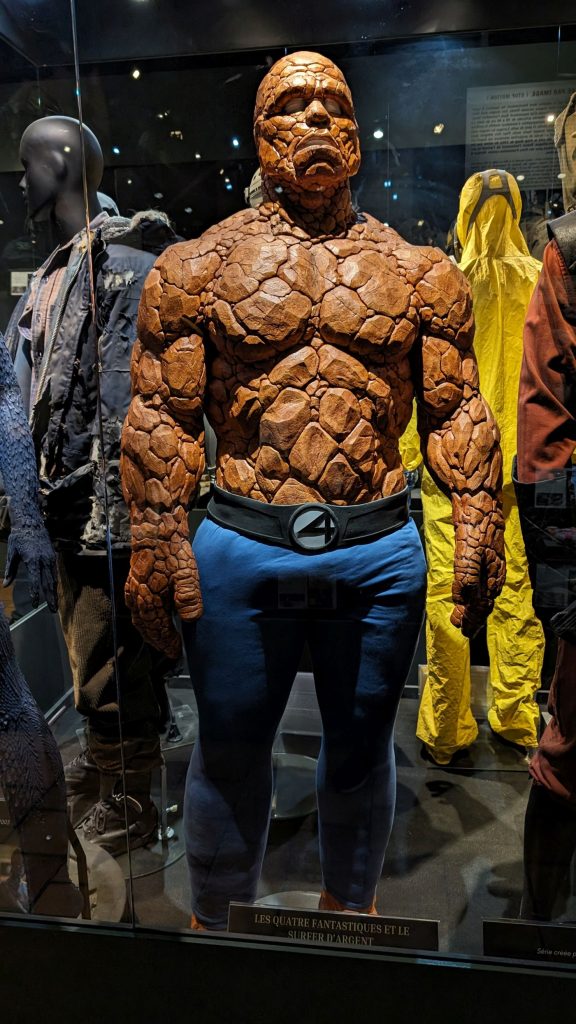
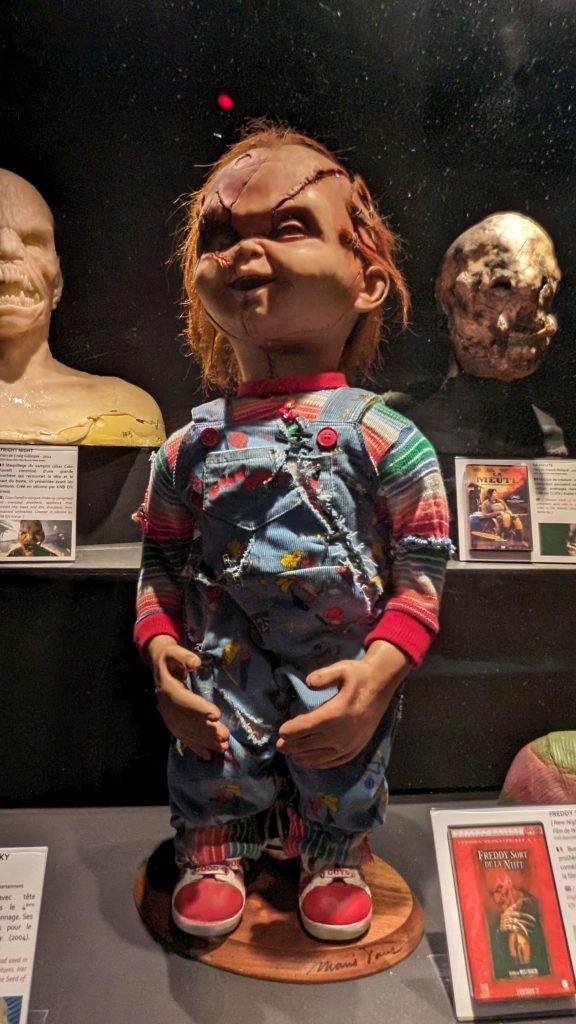
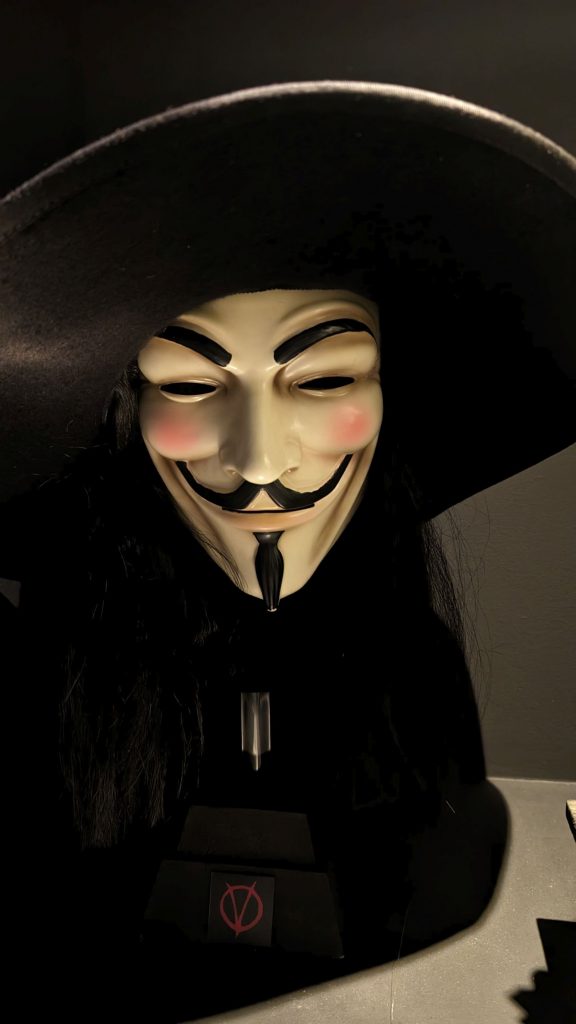
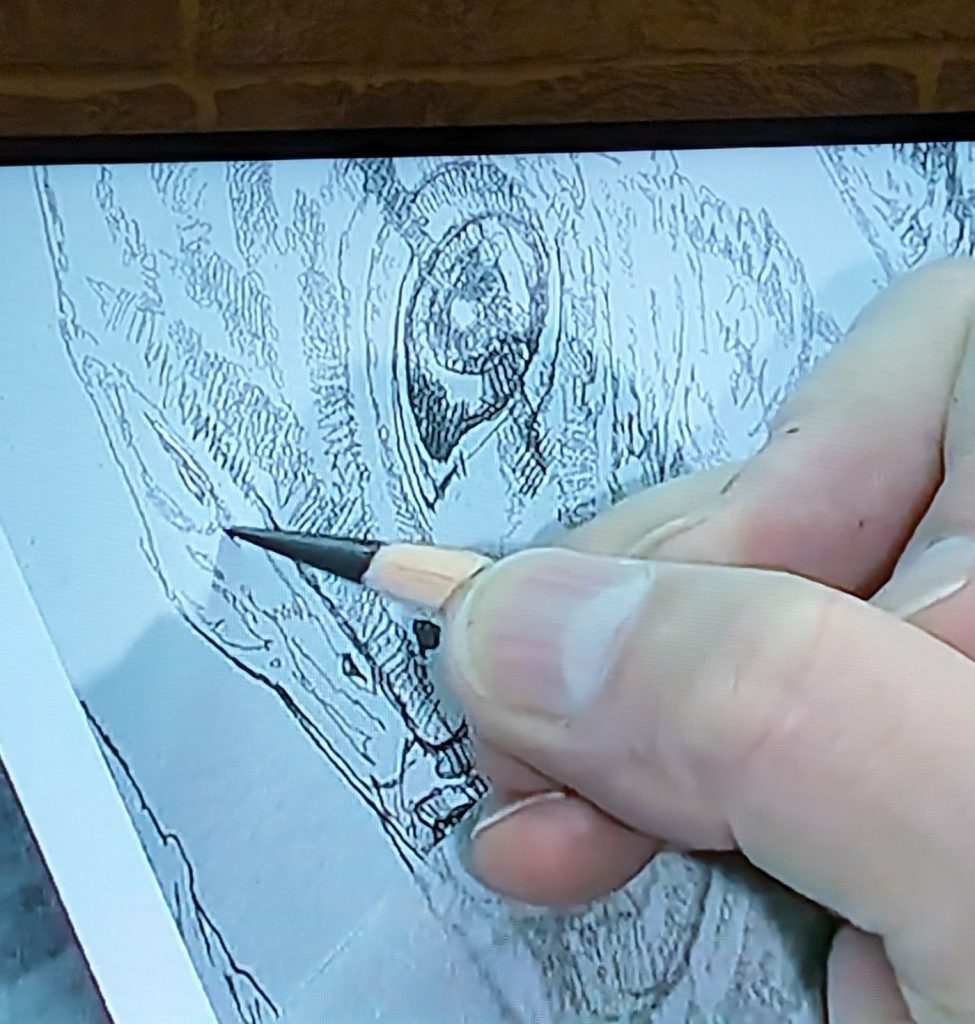
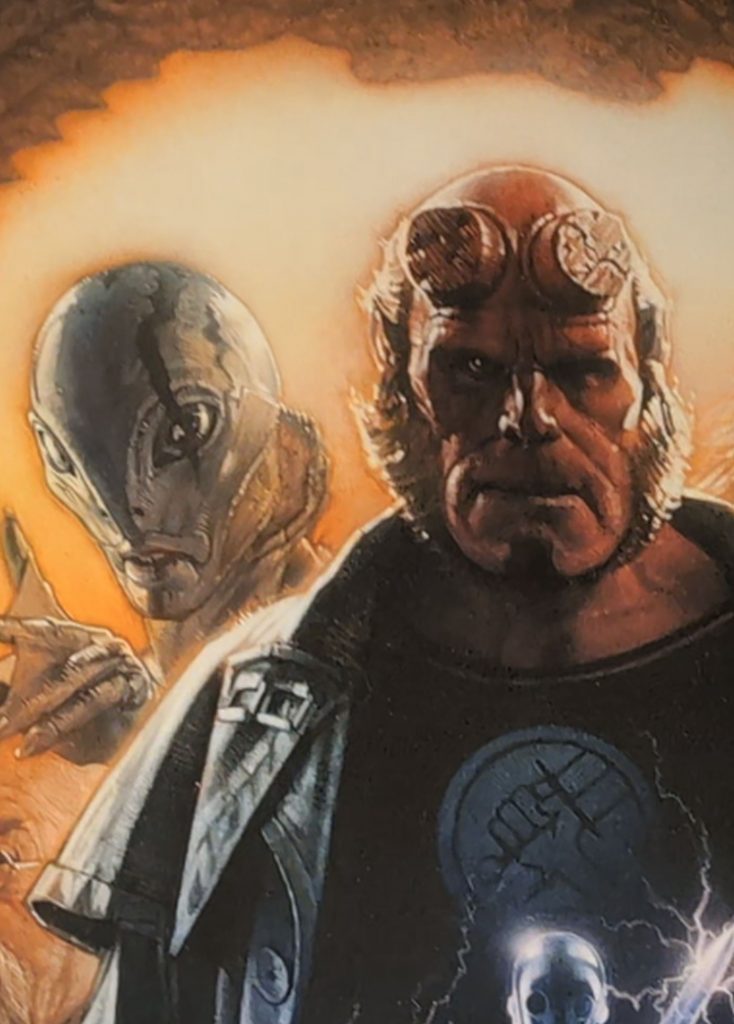
I learned that Drew Struzan is one of Hollywood’s premier poster artists. He is known for his four posters for the four Indiana Jones theatrical films, as well as for Star Wars, Back to the Future, and Harry Potter. This guy created some of my favorite posters and I just learned his name!
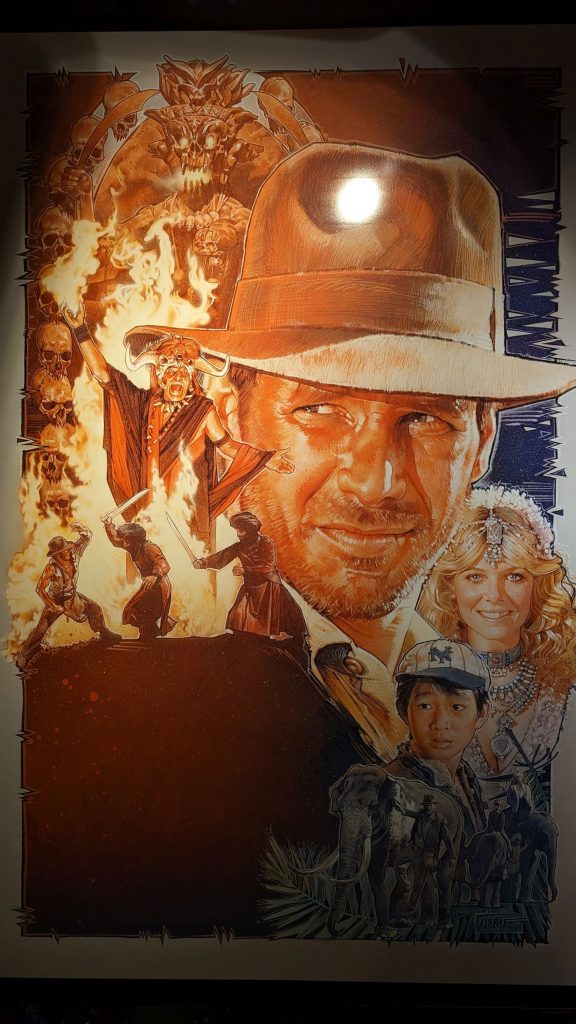
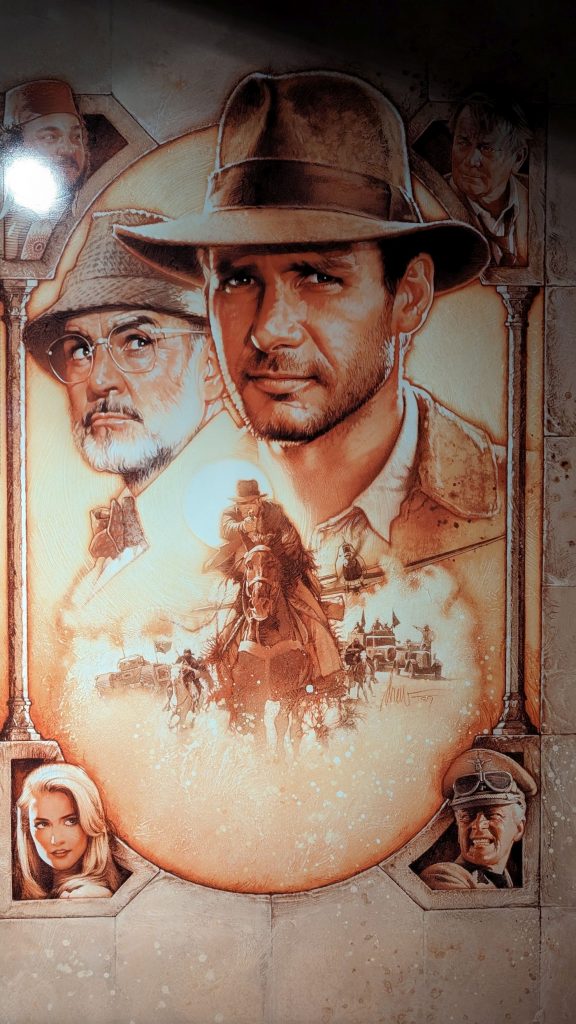
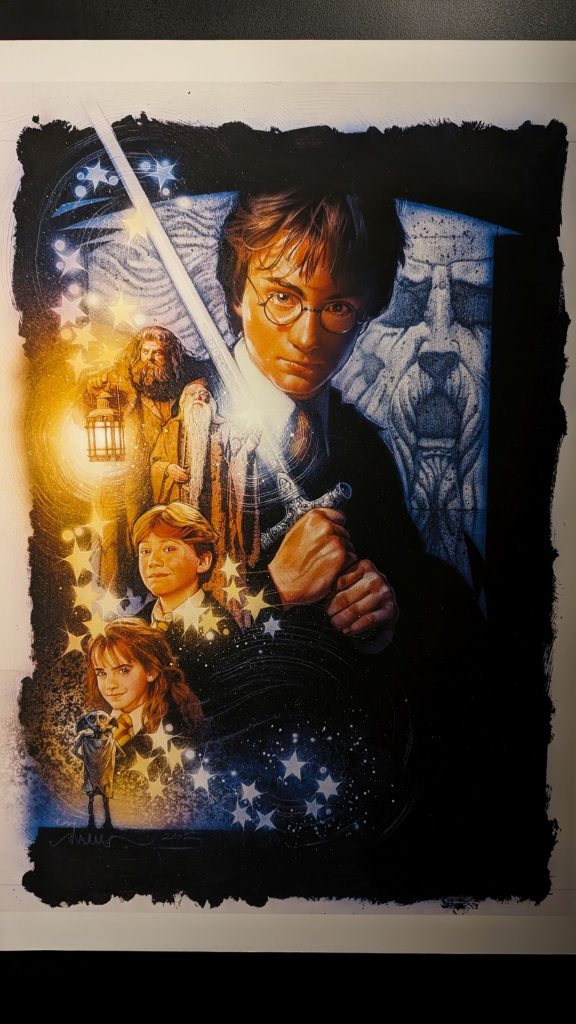
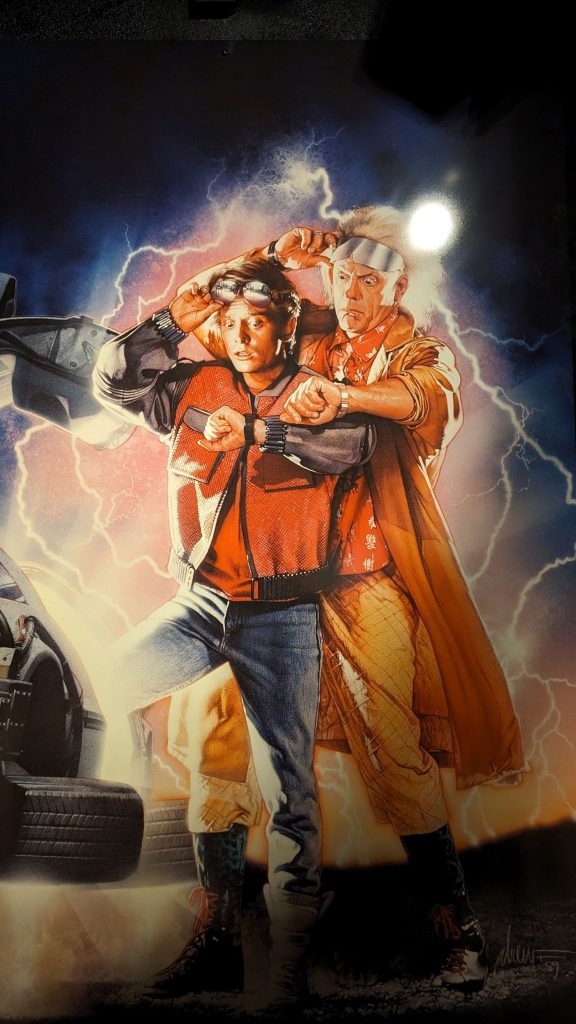
To finish the Drew Struzan movie poster section of this post, I leave you with a Star Wars triptych, three posters that when seen together tell the entire story.
When George Lucas decided to revisit his legendary trilogy through a Special Edition, he called Drew to create brand new theatrical posters. According to Drew, “George absolutely loved the result because it had the entire story in three artworks.”
I think these are so great that they each need their own space.
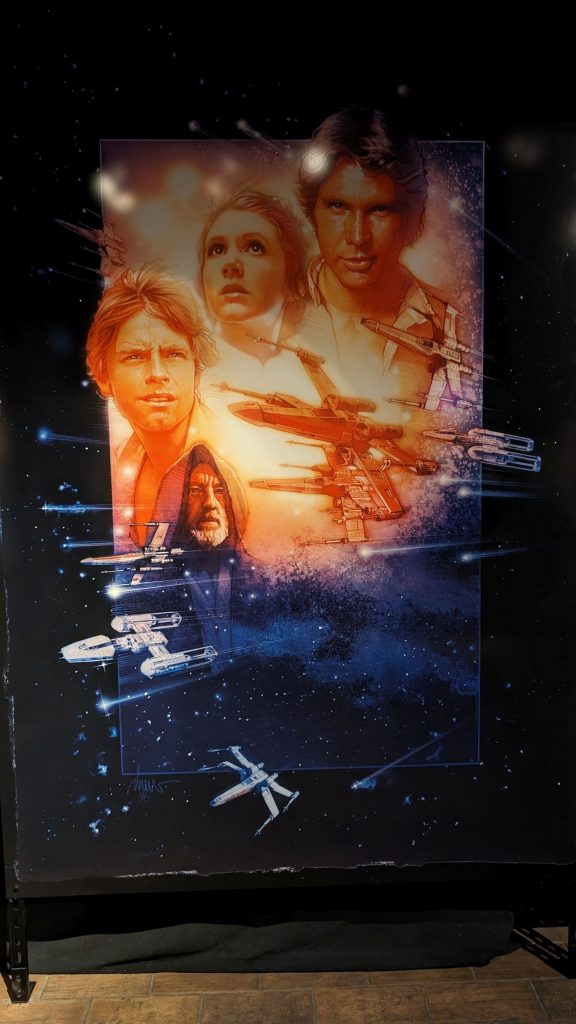
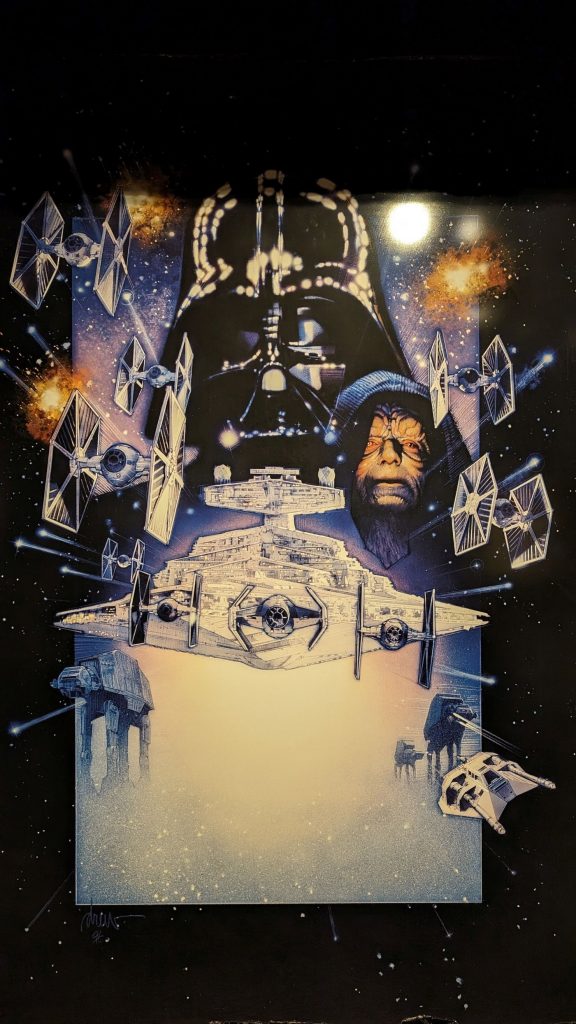
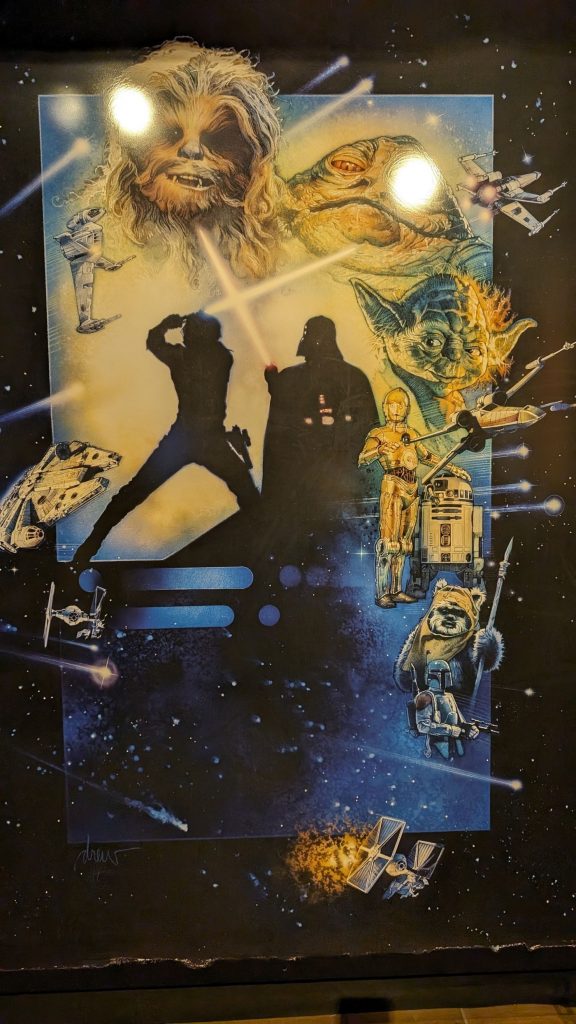
Let’s switch gears. See all of the “guns” in the following picture? They aren’t real. The Colt M16-A2 assault rifle (the big black one in the middle) was created in resin and foam rubber in order to avoid unnecessary fatigue for the actors, and possible injury in case of a fall. From the Ridley Scott movie, Black Hawk Down.
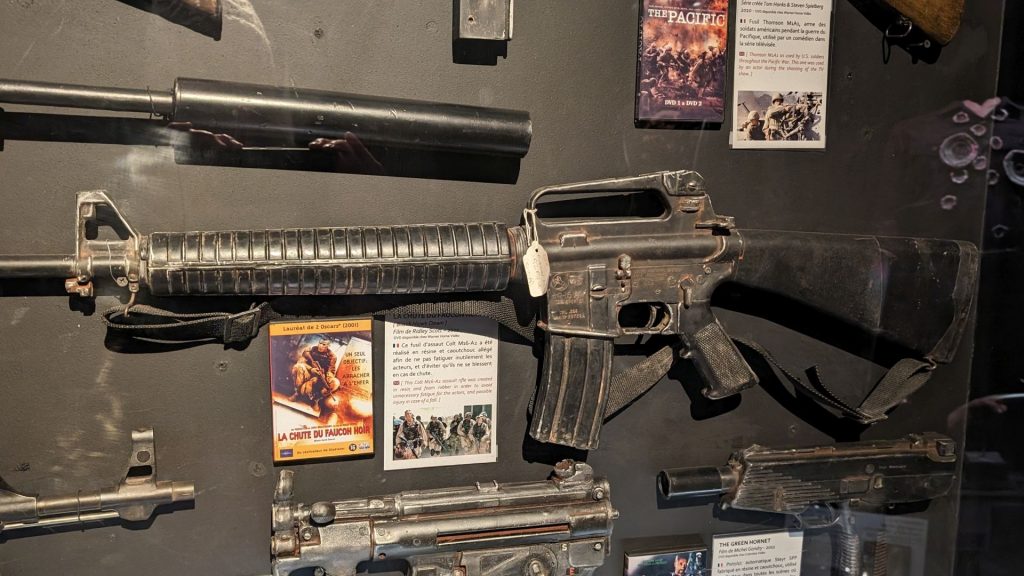
The brownish gun in the center of this picture was also built of resin and foam rubber to allow Angelina Jolie (alias Lara Croft) to film a horse-back riding scene.
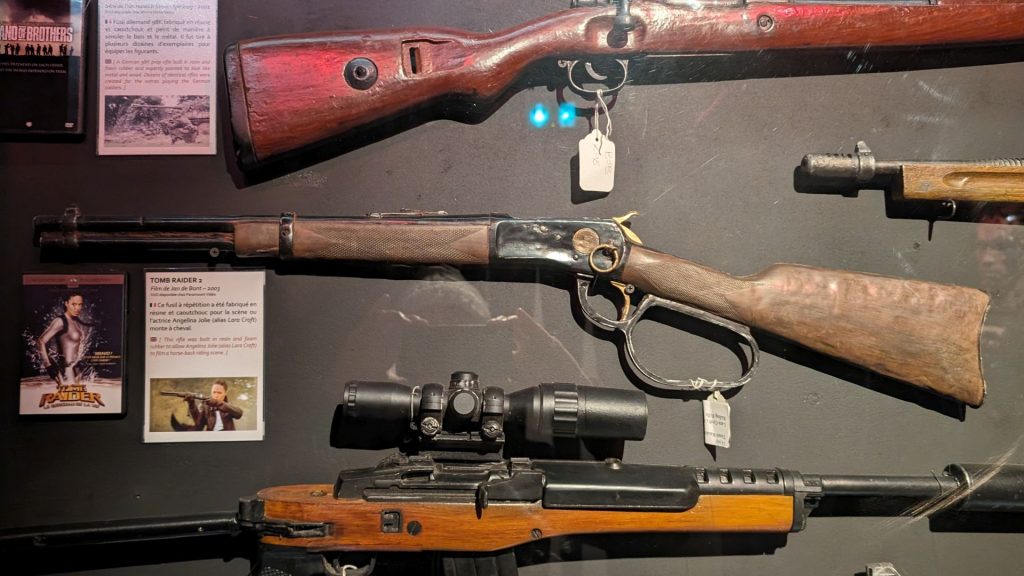
Here are a couple of fun props!
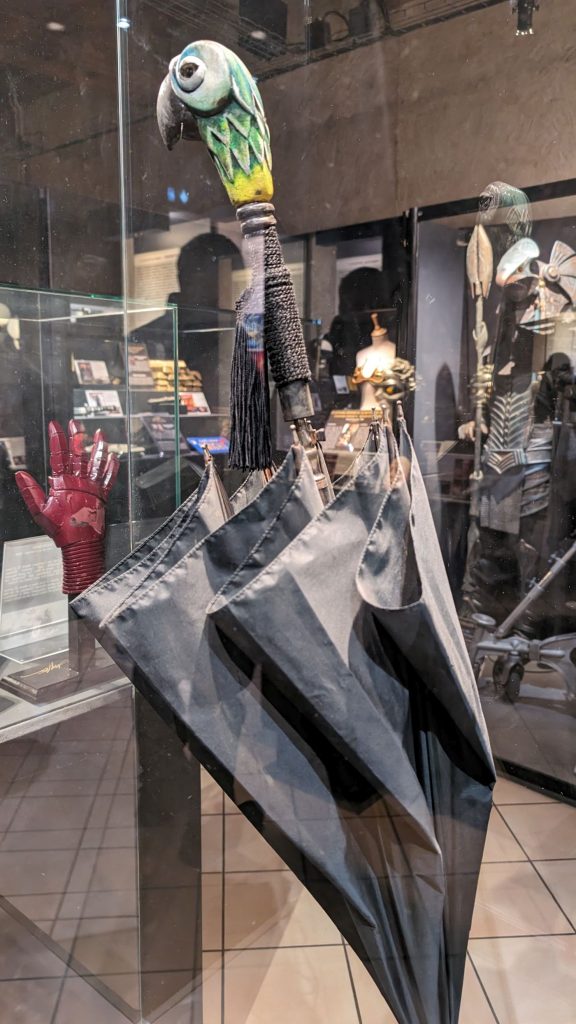
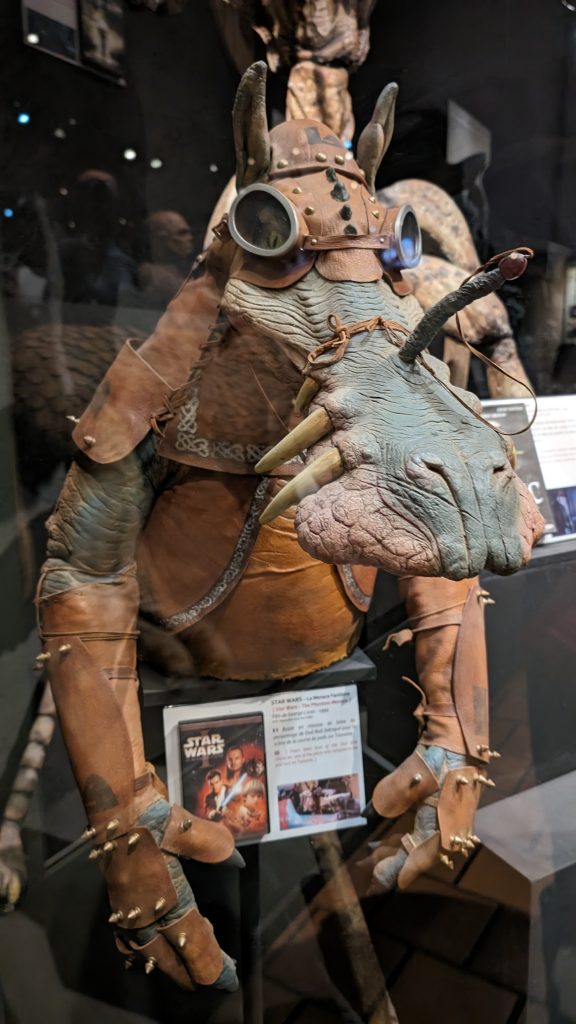
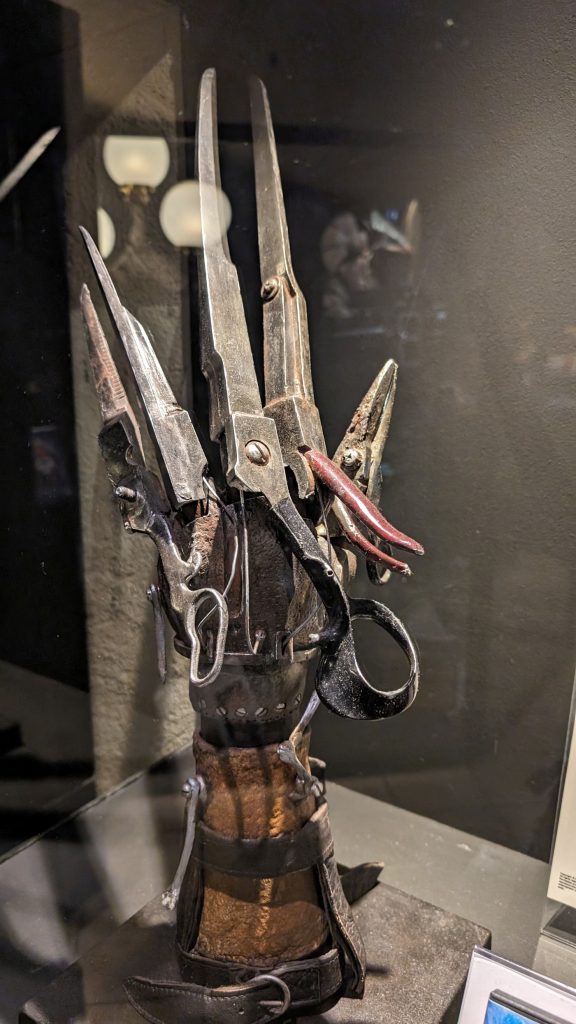
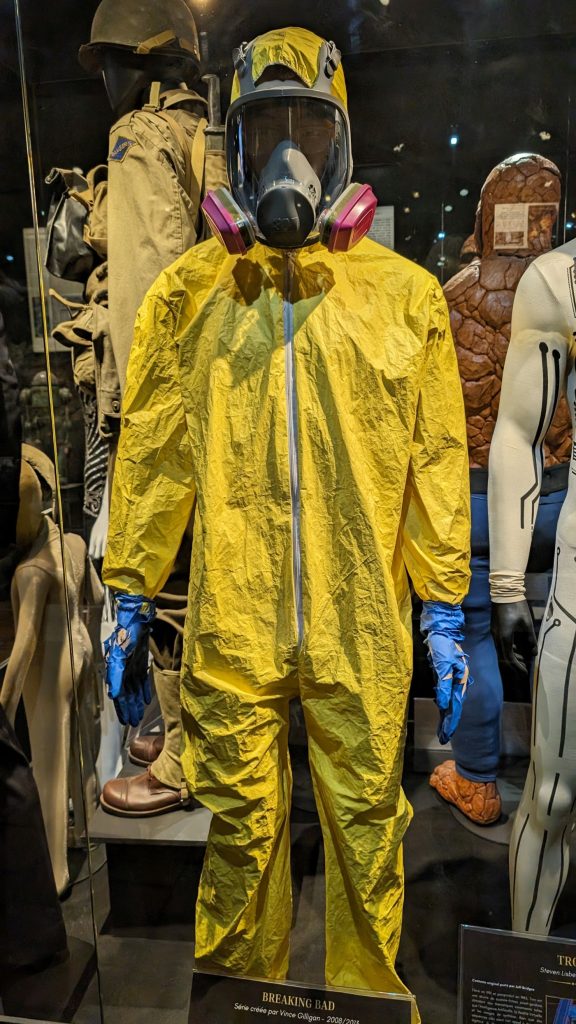
Let’s talk about masks/replicas now. Here are two good examples. The one on the left is from The X-Files TV series. This is Agent Scully (Gillian Anderson), the female lead, not looking her best. This replica of her head was used in an episode in which the agent John Doggett (Robert Patrick) dreams that he finds the severed head of his partner.
The picture on the right is the head of Lestat the vampire (Tom Cruise) used in the sequence in Interview with the Vampire in which Claudia (Kristen Dunst) cut his throat. Then he gets old as he bleeds out. The head, made of silicone by Stan Winston Studios, is equipped with motors allowing eyes and mouth movements.
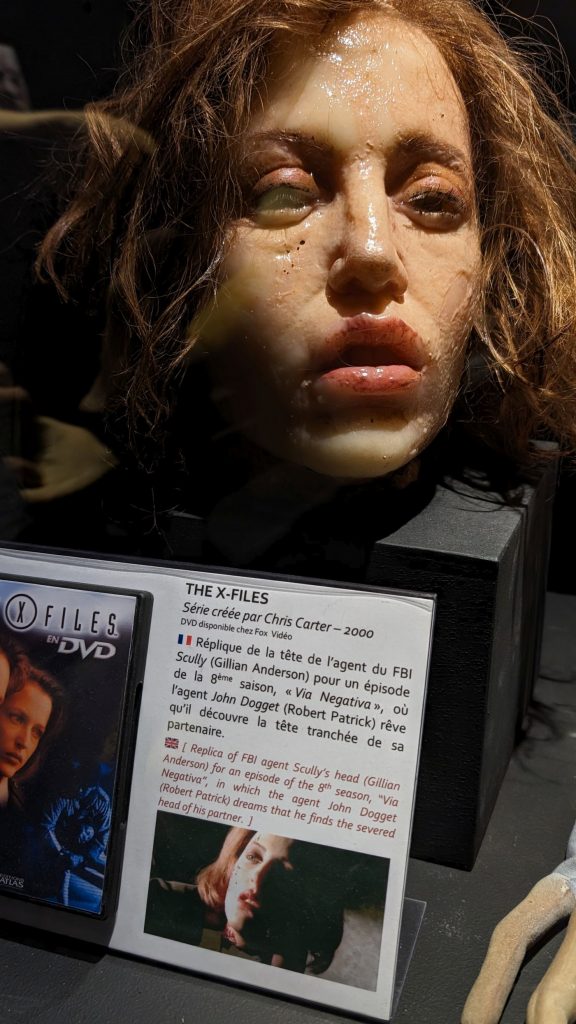
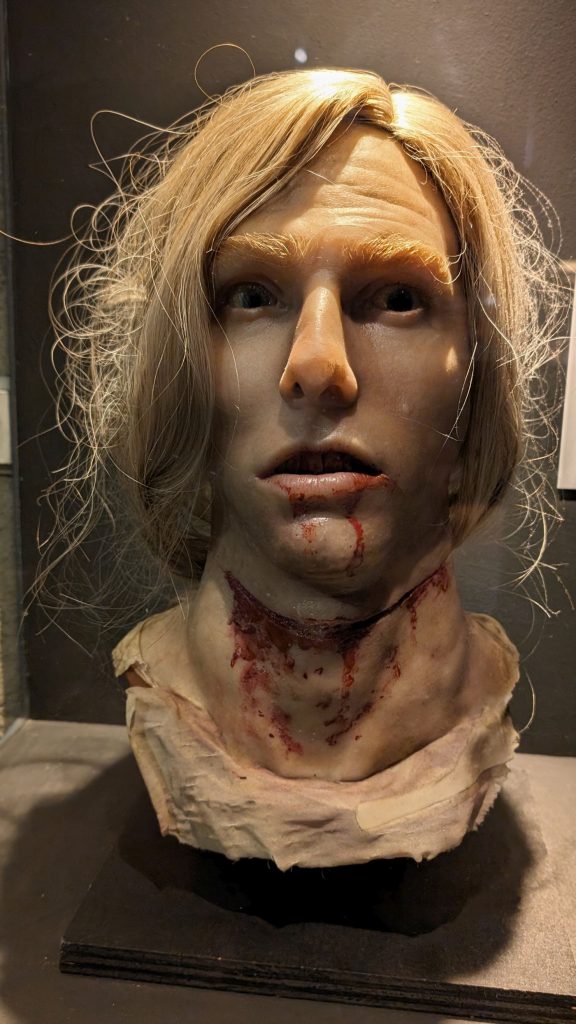
I hope y’all recognize these next two ladies: Thelma and Louise. These fake heads of Thelma (Geena Davis) and Louise (Susan Sarandon) were built from latex after the casting of the actresses’ faces. They were used at the end of the film, replacing the actresses when their car jumps into the canyon.
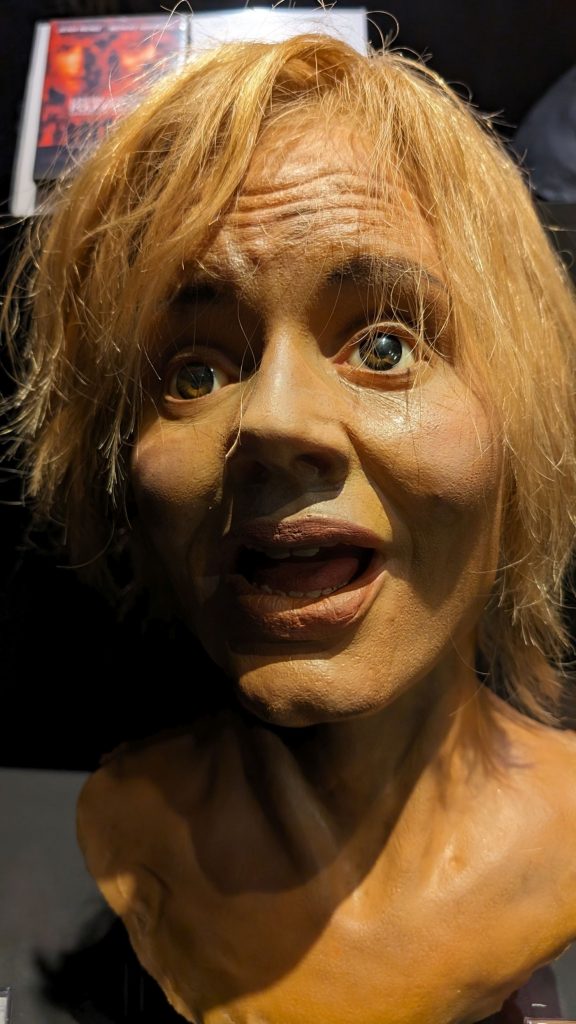
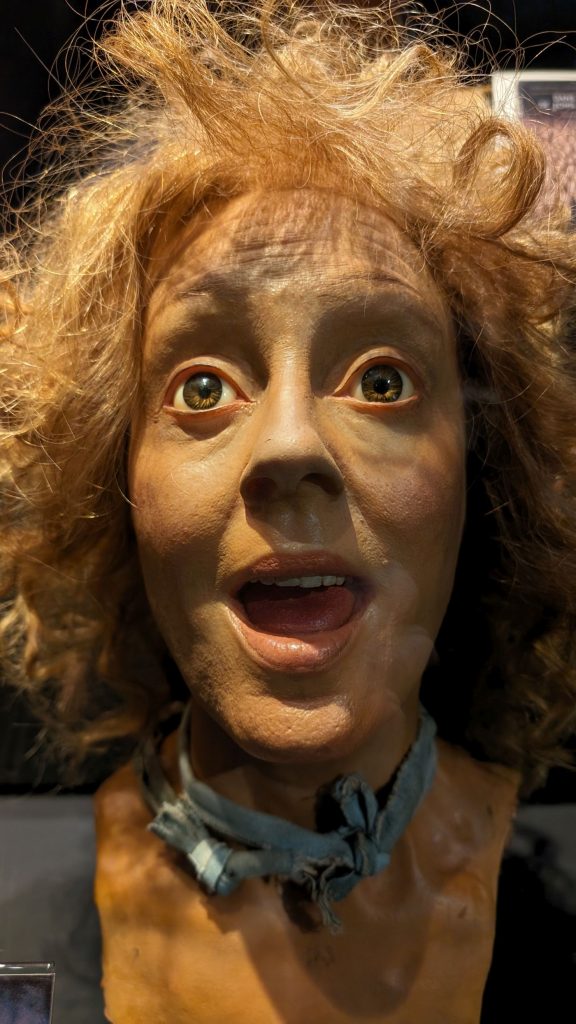
(There’s a little quiz at the bottom of this post for those who want to play “whose face is this?”)
As you probably know, movies don’t always use life-size stuff. They also use models. The museum had several models on display.
I don’t think I ever saw Event Horizon, but the model was pretty great. The making of this movie required one of the most extensive miniature shoots ever undertaken in Europe. Two spaceships were created for the movie: The Event Horizon and the Lewis & Clark. Each one was built at various scales for different purposes (explosion, long shot, close-up . . . ). This model was the largest version of the Lewis & Clark. It is over 4.2 meters long by 2.2 meter wide (1/16 scale). In the movie, the ship is supposed to be 70 meters long, which required a huge model. Modelmakers added many tiny details to the miniature, including maintenance instructions, which enhanced the scale of the ship. Filmed on green screen, the model was then digitally combined with a star field.
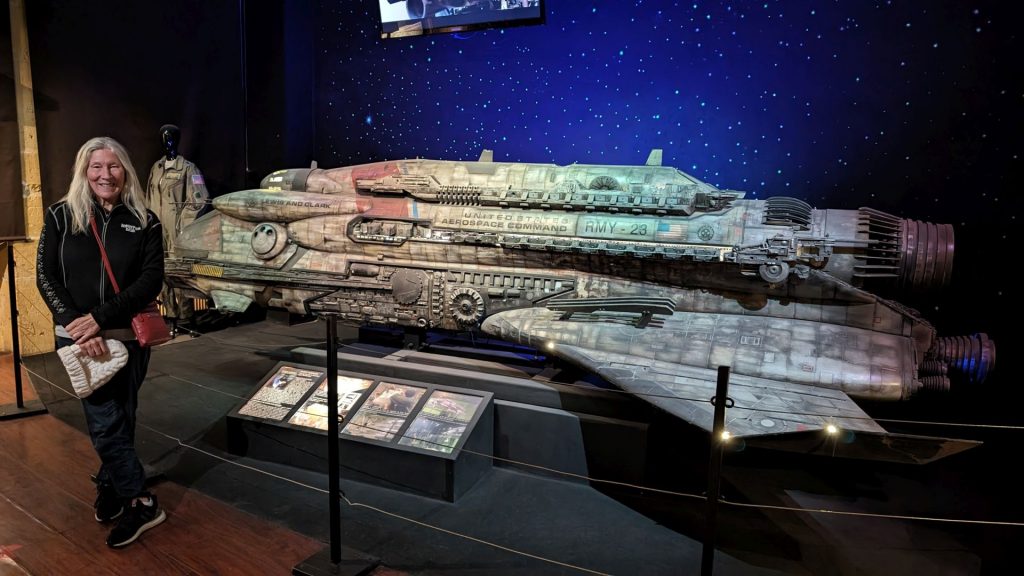
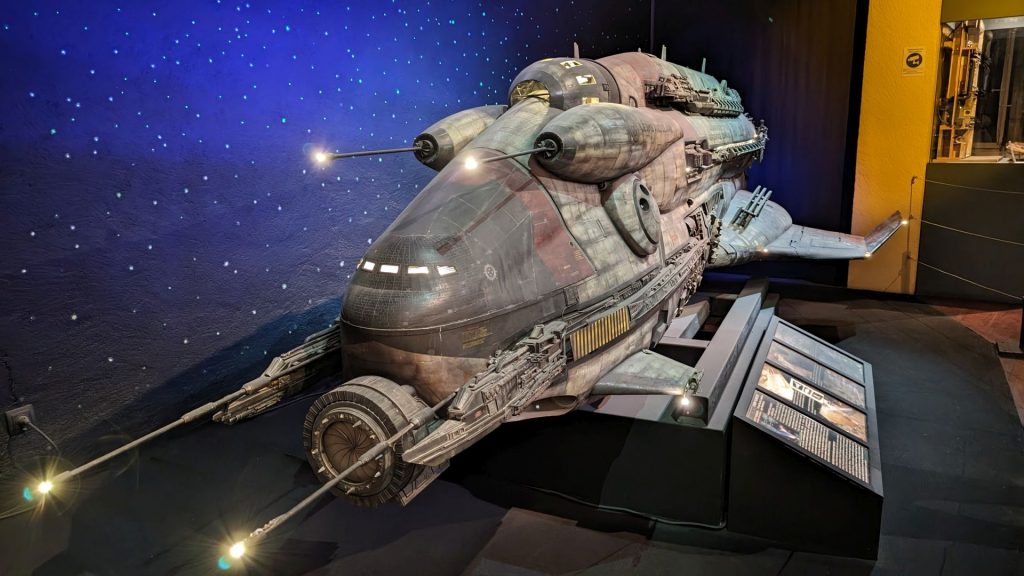
Here are a few more miniatures.
This miniature cable car station was created for the Grand Budapest Hotel. The mountain was sculpted with a chainsaw, and then with knives, in a very dense polystyrene. This material is covered with cracks that perfectly simulate the look of a rocky surface. The building is made of wood, plaster and plastic. The building model itself was used to simulate both the departure and arrival stations. The crew only had to make it pivot 180 degrees according to the needs of each scene.
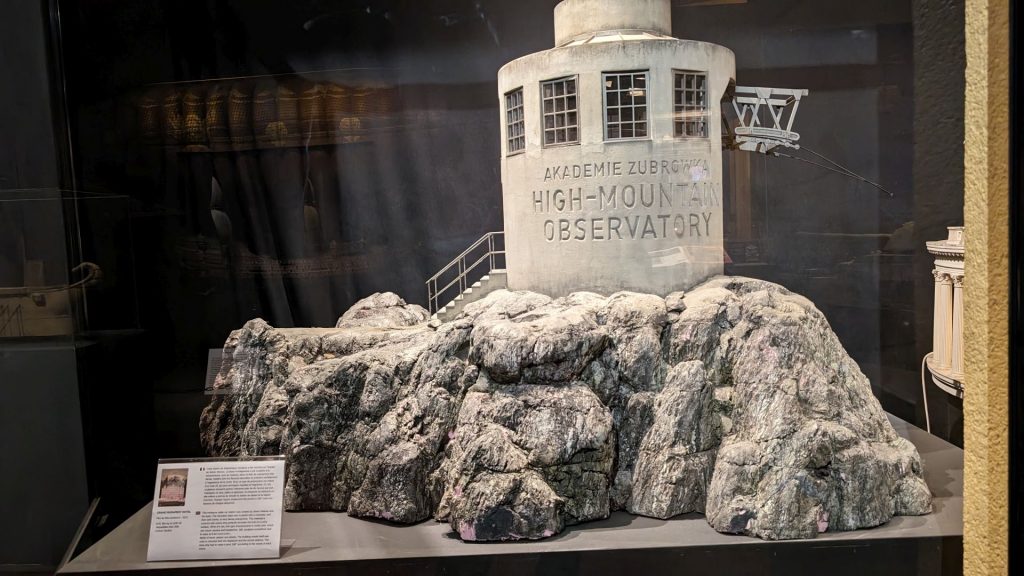
The next model doesn’t need much introduction. If you saw Apollo 13 or know the true story on which it is based, you know that this is (a model of) the lunar module. The real lunar module served as a lifeboat for the crew of Apollo 13 after an oxygen tank in the service module (SM) ruptured two days into the mission, disabling its electrical and life-support system. It brought them home safely to Earth.
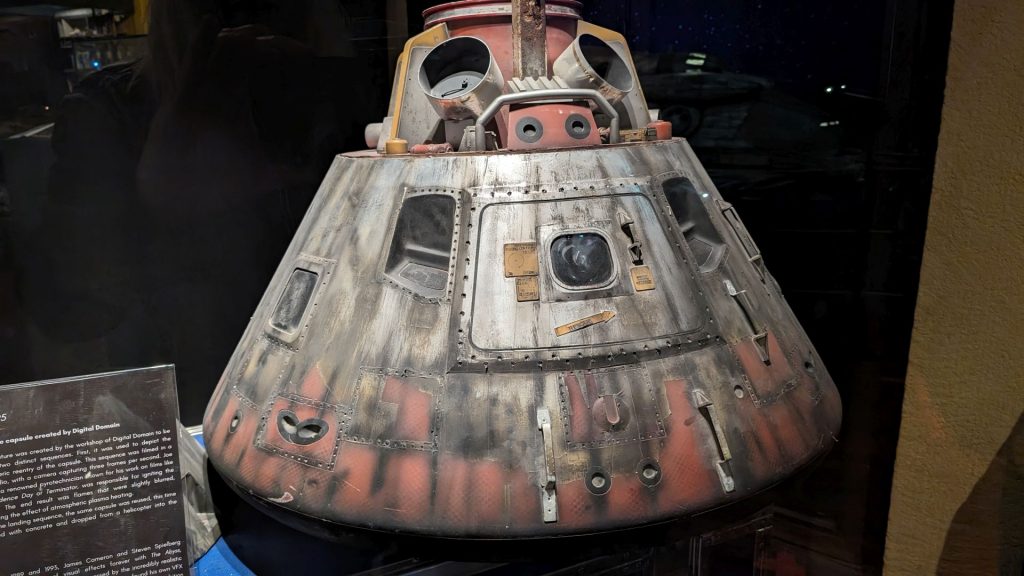
The bikini top on the left in the next set of pictures was worn by Princess Leia (Carrie Fisher). Her body was cast by designer Richard Miller, and the bra was fabricated specifically for her measurements. The actress lost weight before the shoot, so the bra was a bit loose.
The chocolate bar on the right is actually cast in hard plastic. This was used during the filming of Willy Wonka and the Chocolate Factory.
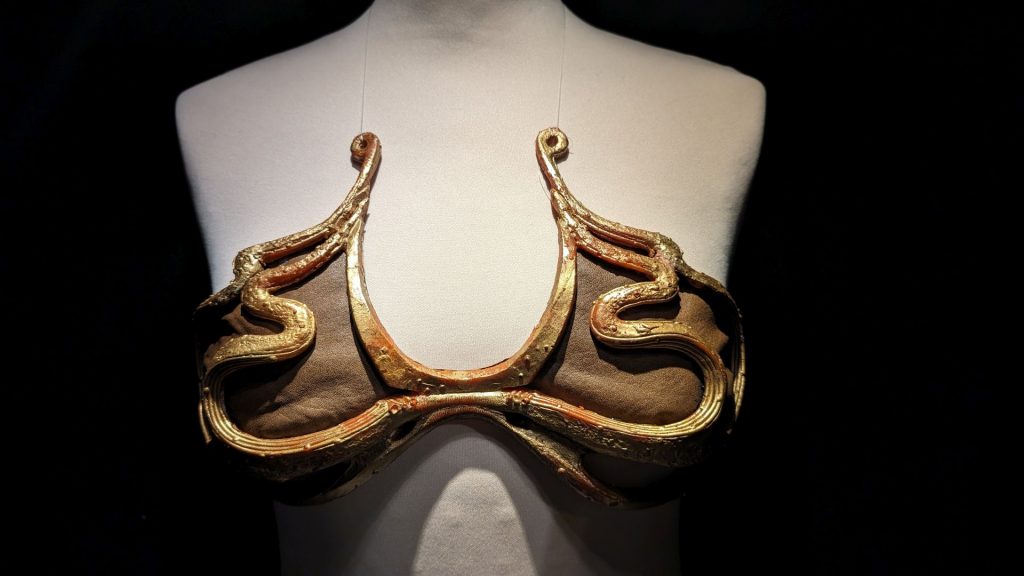
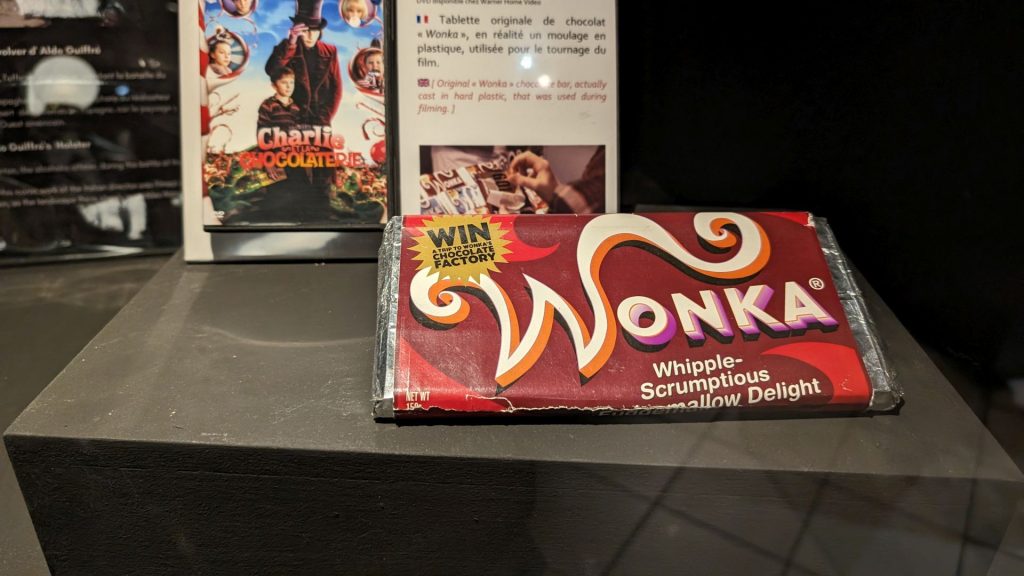
I typically avoid scary movies, but Aliens is one of my favorite movies! Based on the information displayed at the museum, the fascinating Alien Queen is the brainchild of director James Cameron. He created the design himself and asked special effects company Stan Wilson Studio to build it. It was animated by two puppeteers concealed in the torso (emphasis mine because I was so surprised by this!), and by remote-control mechanisms. Eighteen years later, the alien queen was back on the big screen for Alien vs. Predator. (I did not know this either, not having seen the film.) This required her to be rebuilt from scratch by special effects company A.D.I. This time, the animatronic character was fully robotized. The animation was pre-programmed on a computer and played back on set as required.
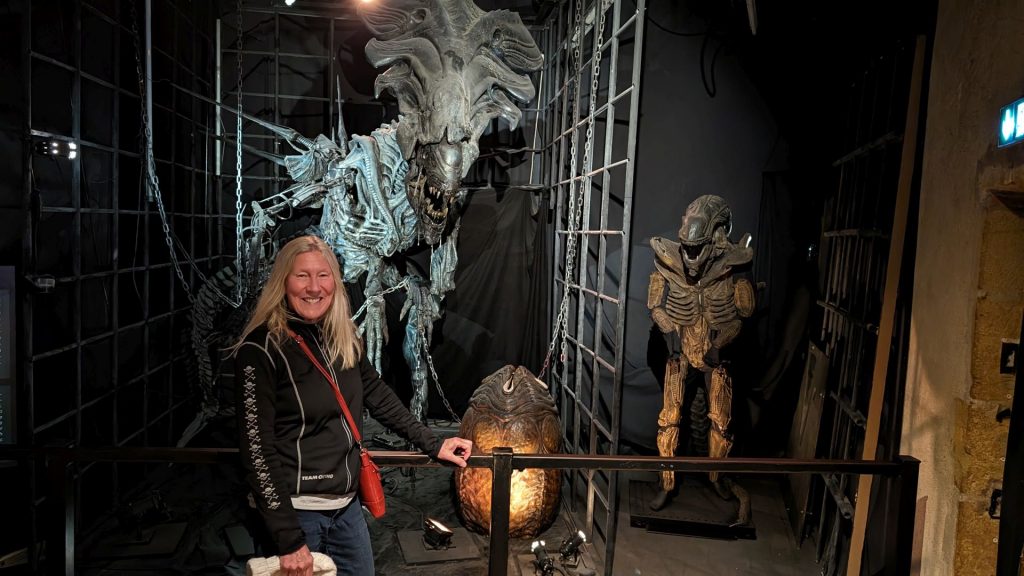
Continuing with the alien theme for a bit, the picture on the left below is the animatronic head of the alien newborn in the movie Alien: Resurrection. The head contains dozens of servomotors and mechanisms that animated the silicone skin. The complete body was more than eight feet tall. Built by A.D.I.
Moving away from aliens, the picture on the right shows a cart and containers that were among the numerous props conceived by the team of ILM used during production of Indiana Jones and the Temple of Doom. The rock-surface presented here is a facsimile fabricated with the same techniques as the film.
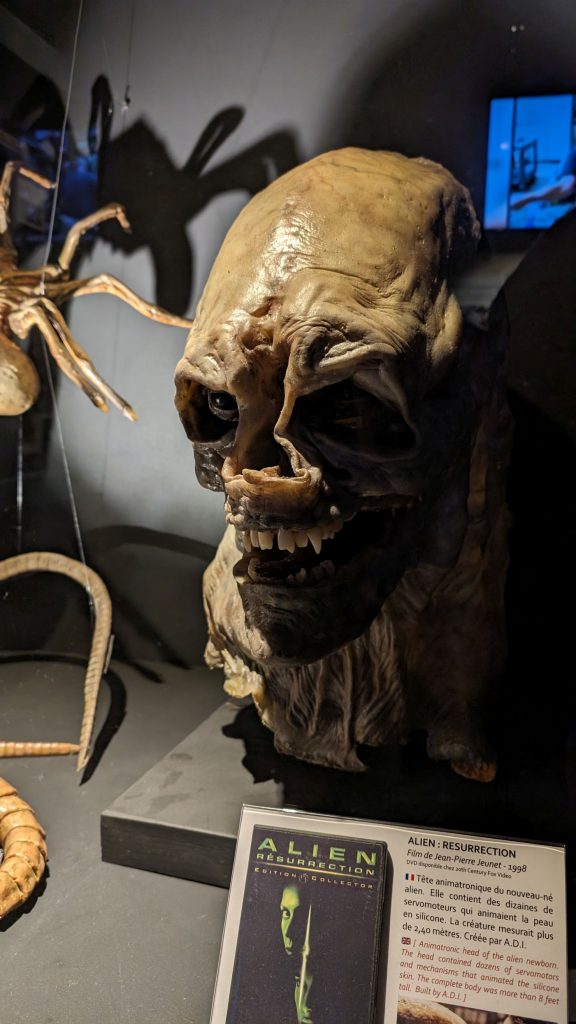
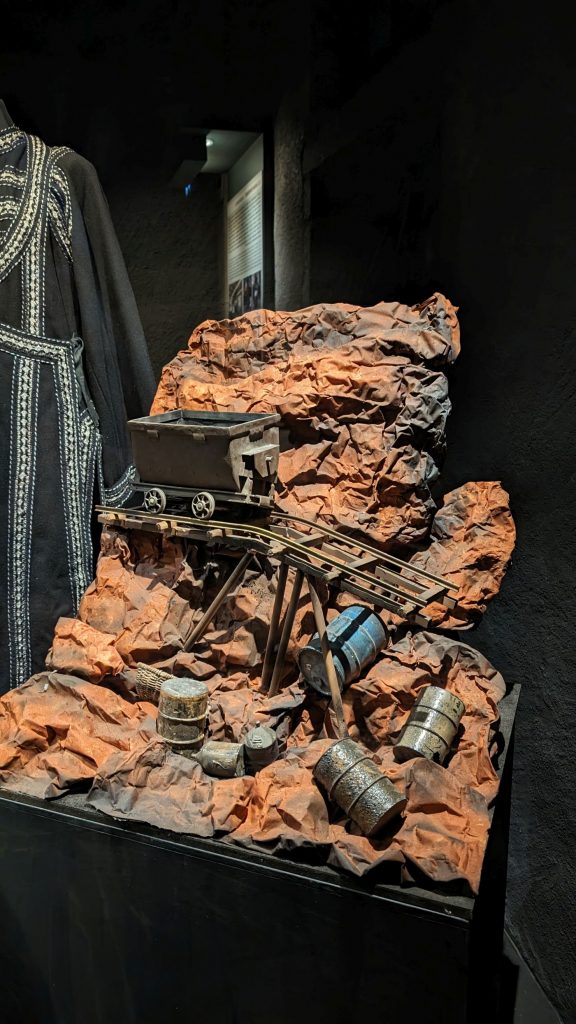
It’s multiple miniatures time! As you look at these, keep in mind that they are actually very small. Most of them were probably something like a foot and a half wide and a foot tall. They were probably about a foot deep. Some of the “big rooms” are maybe twice that size, but still, small. I tell you this because from a distance, they don’t look like much, but if you put your face up close so all you see is the room, it looks real!
This is what the displays look like standing a few feet away:
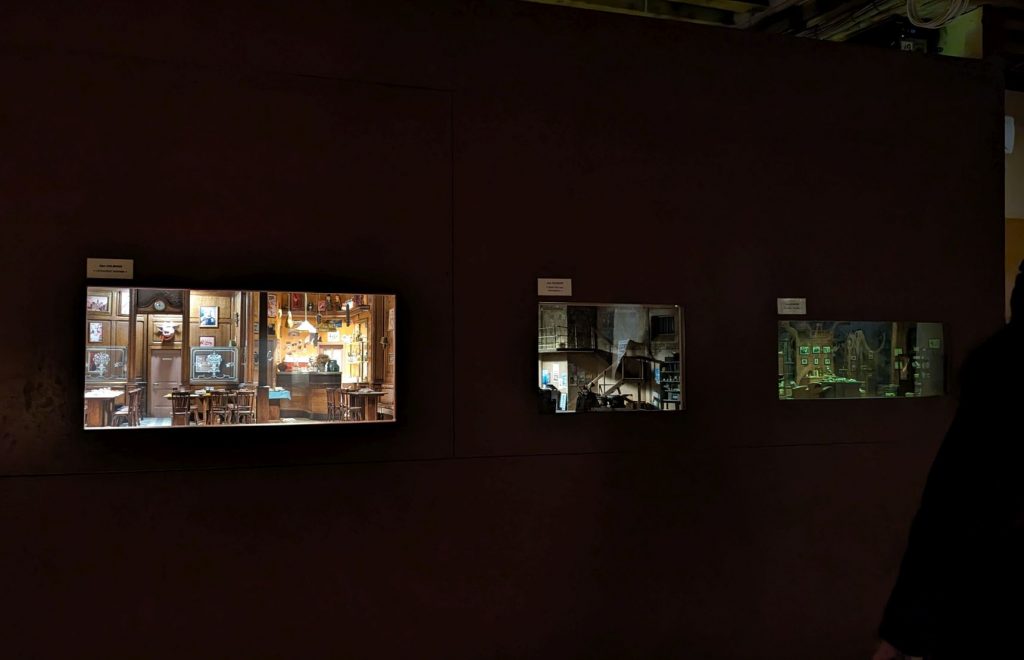
And the pictures below are from a couple of feet away compared to up close.
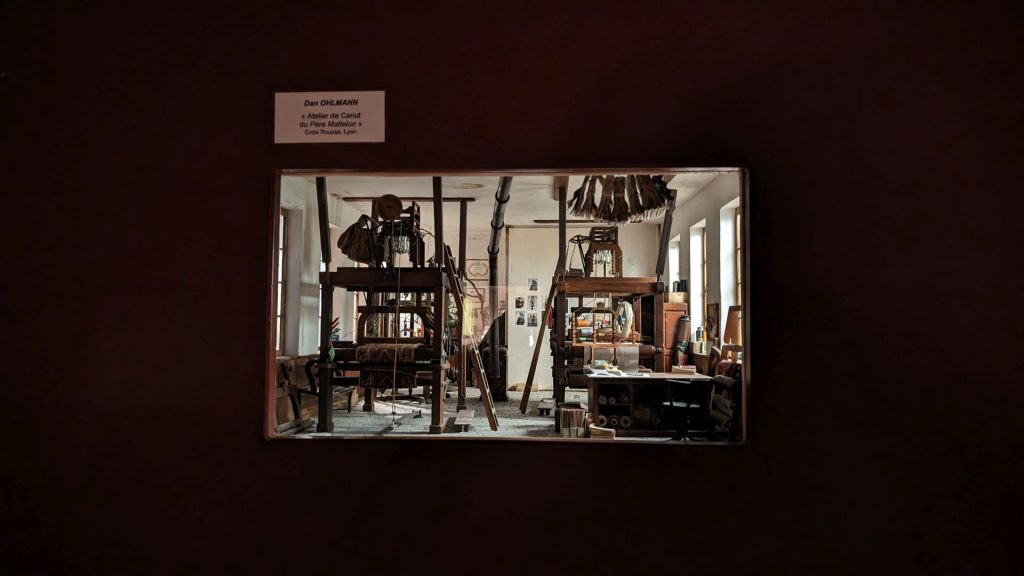
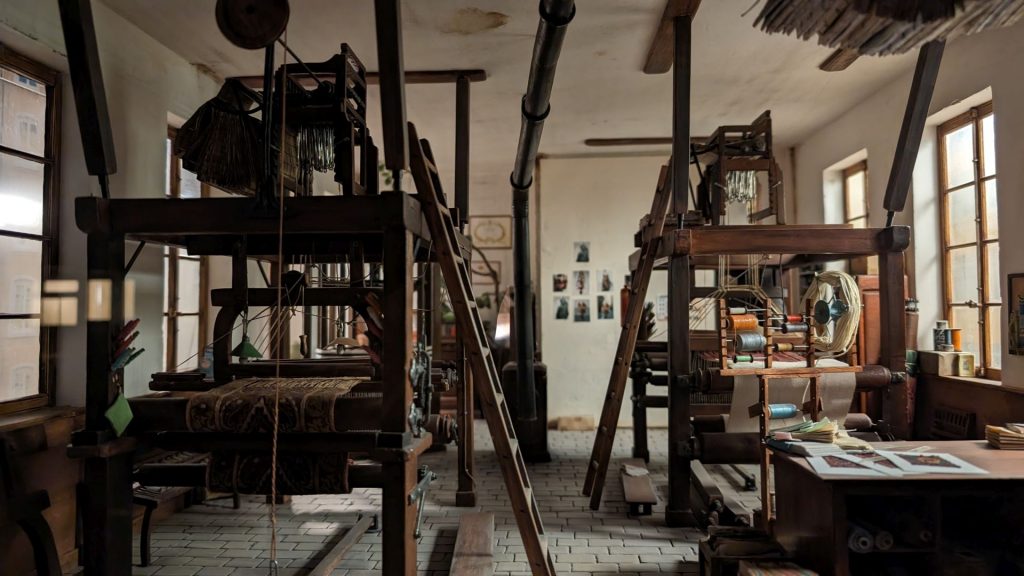
Okay, now I am going to share the “rooms” from up close only. Just look at the detail, and remember that some of the smaller objects are probably no more than ¼” in size.
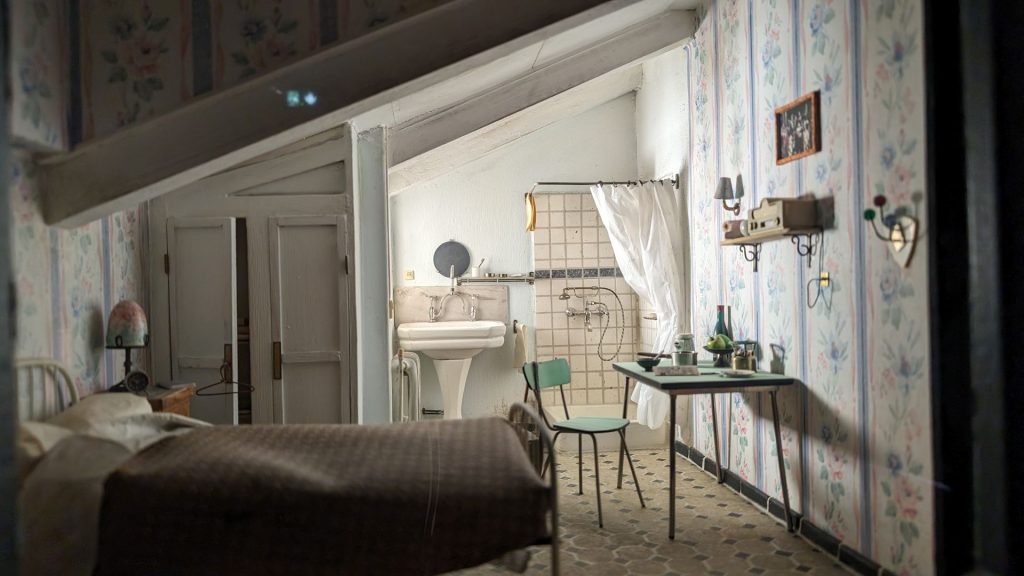
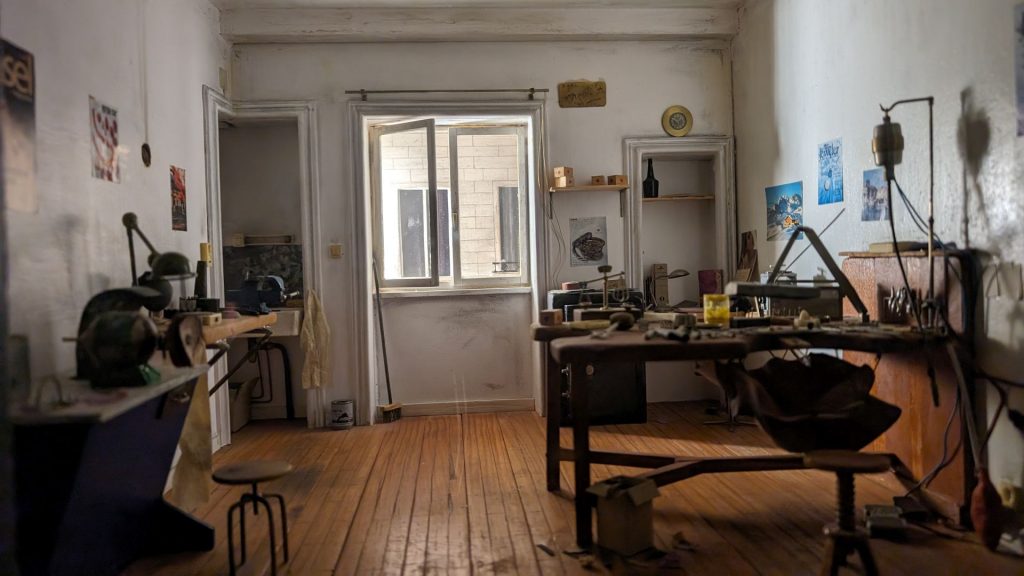
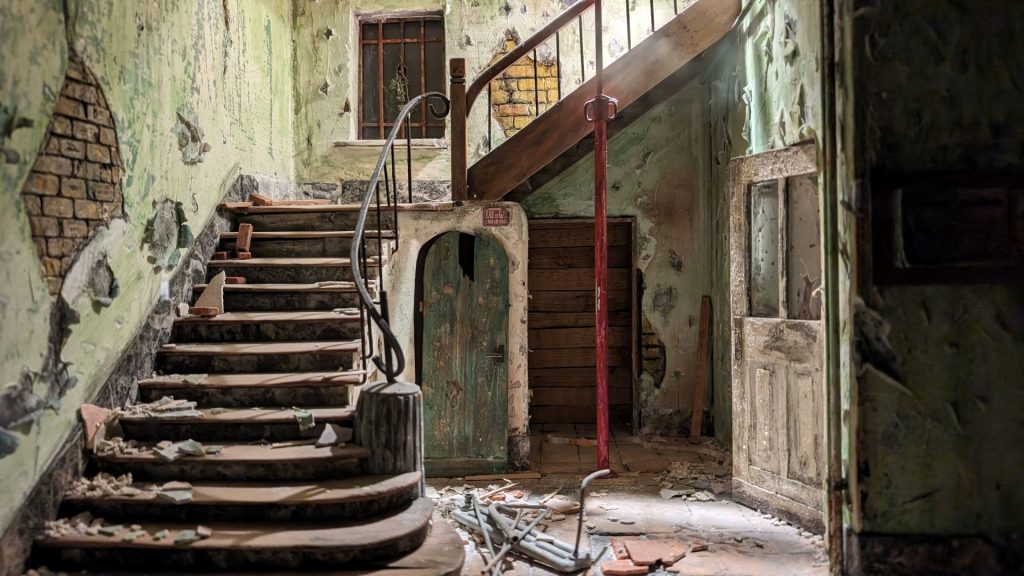
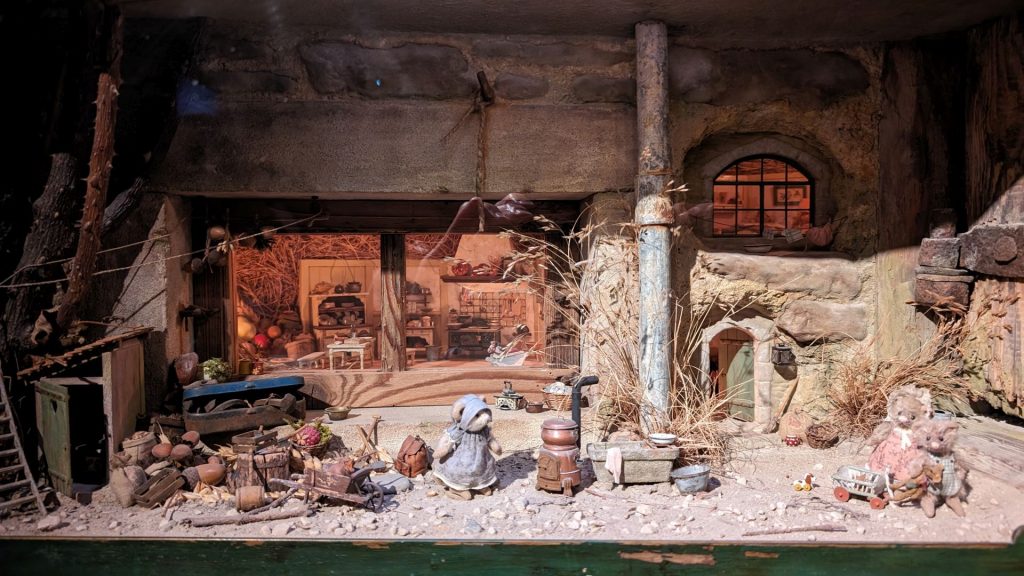
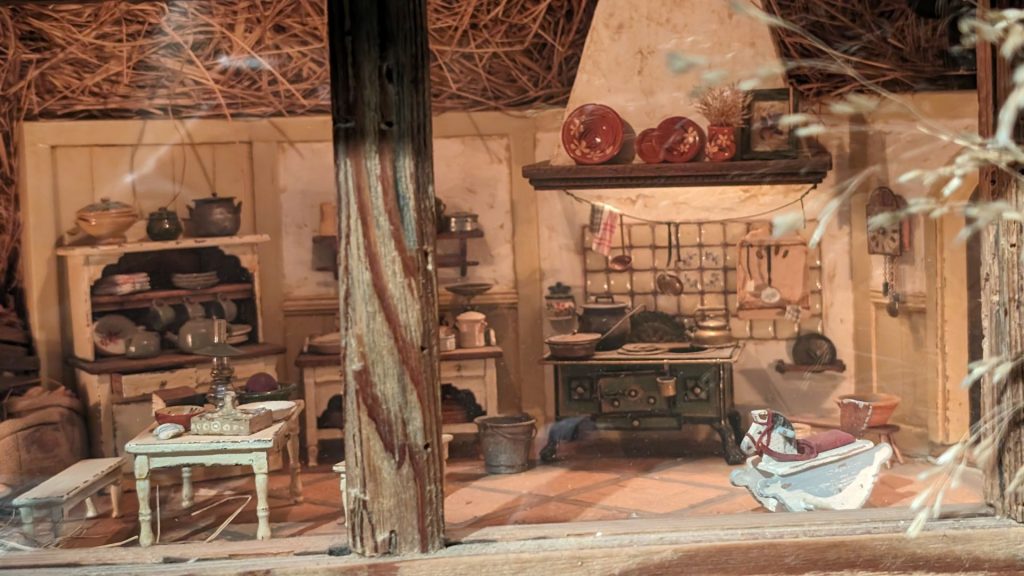
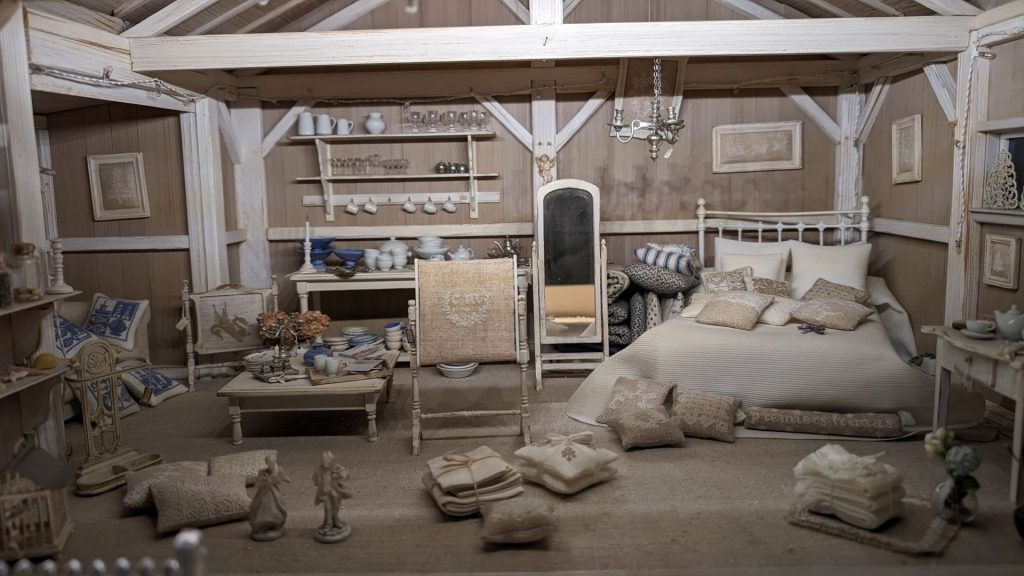
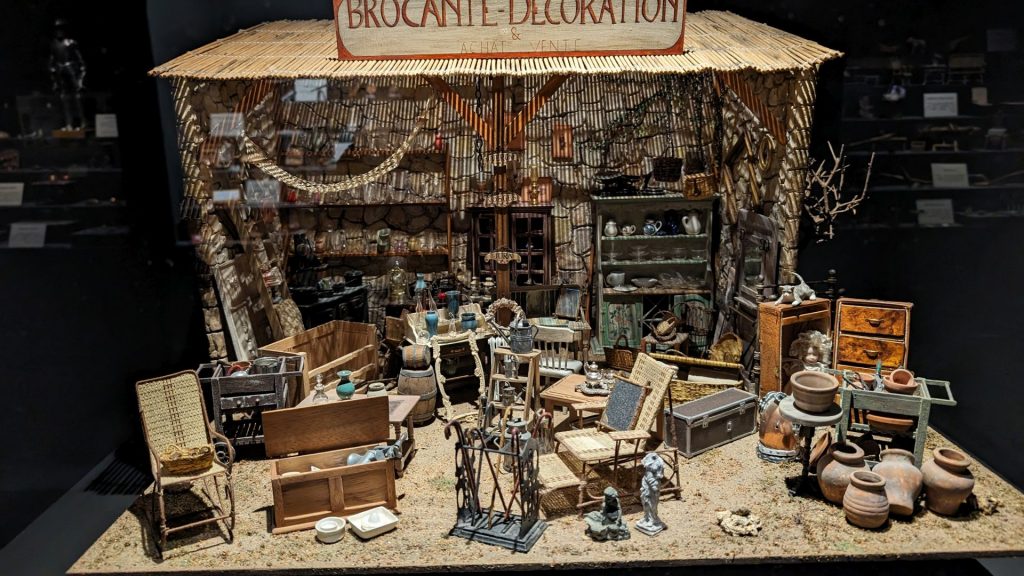
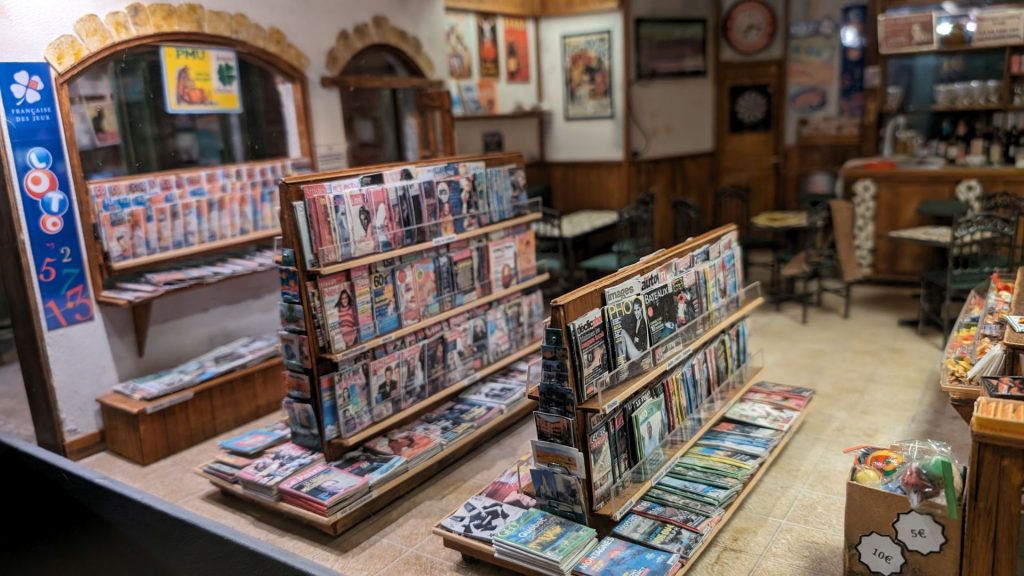
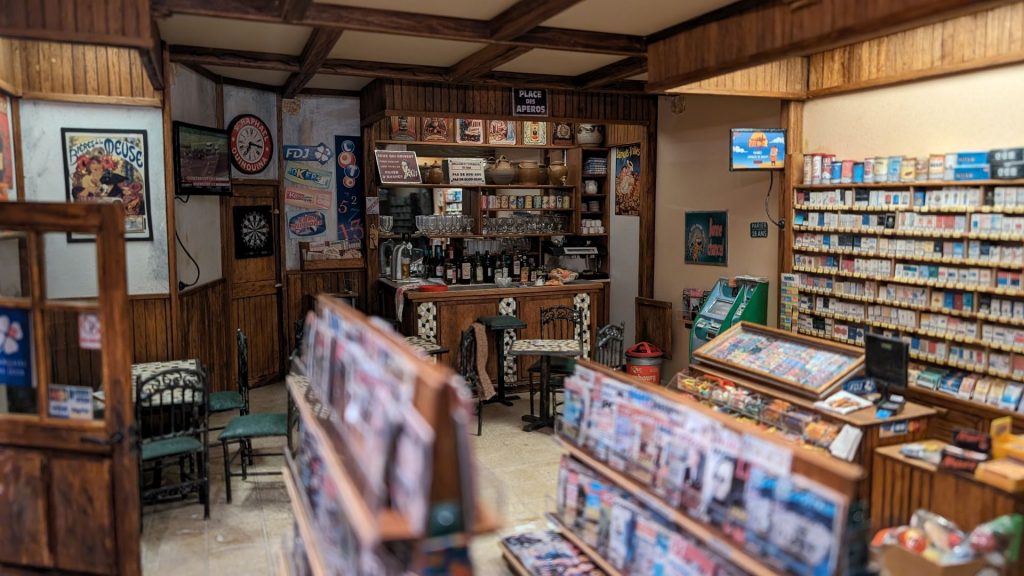
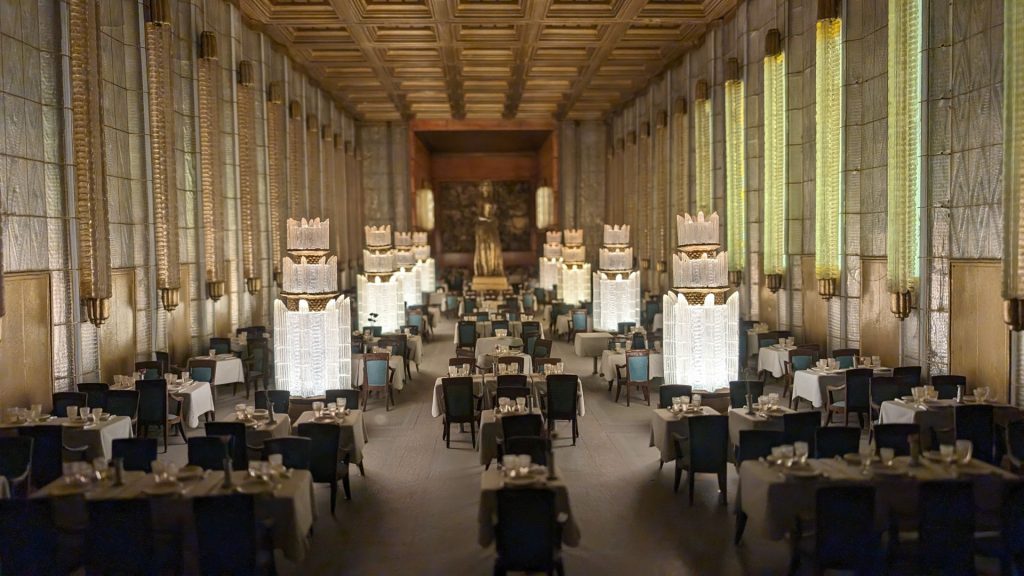
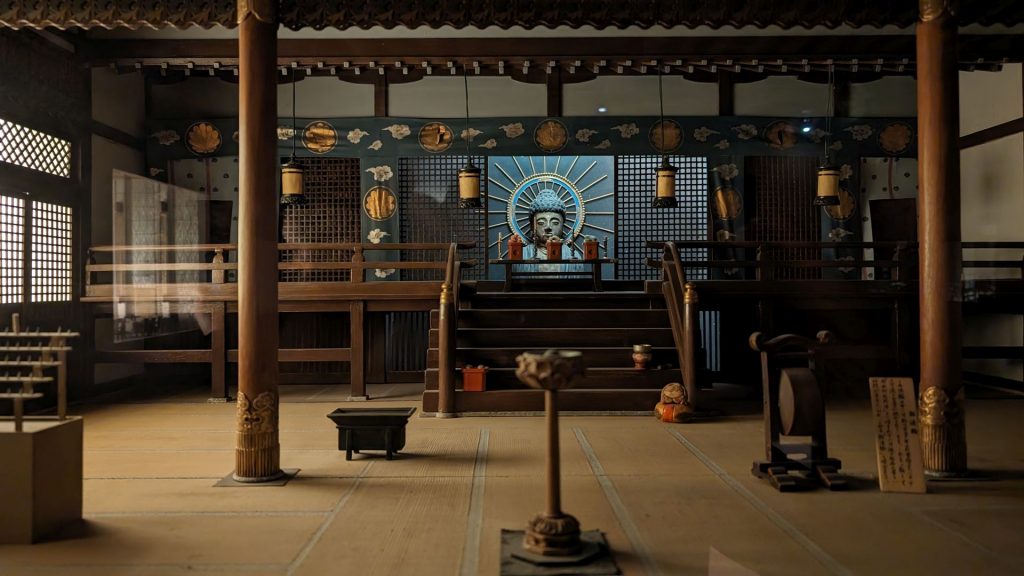
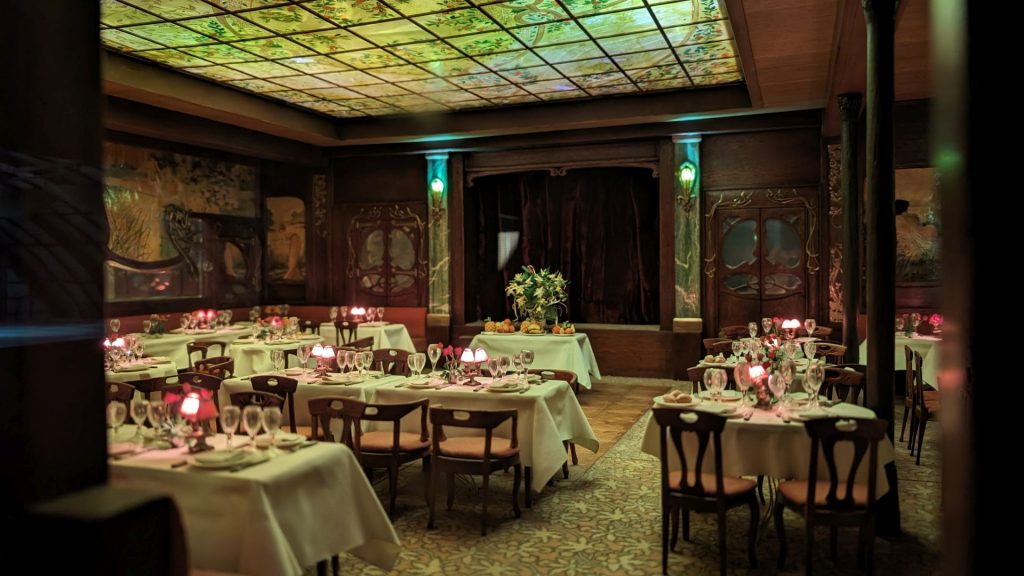
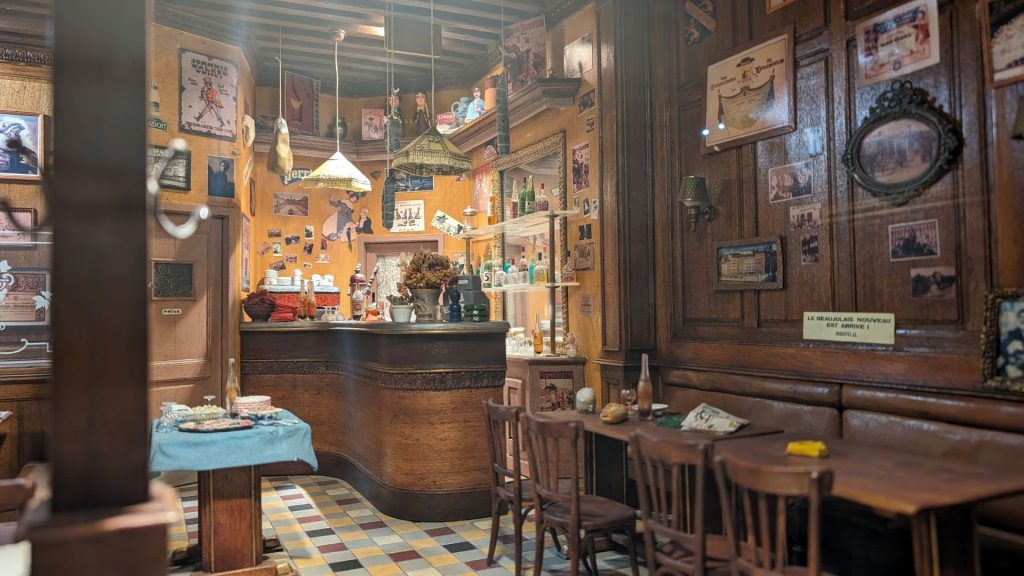
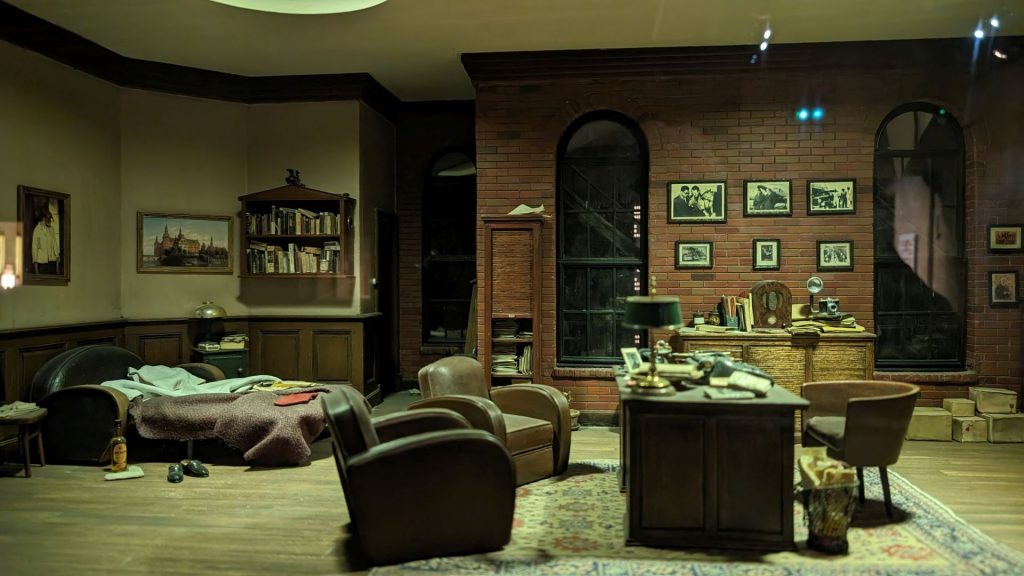
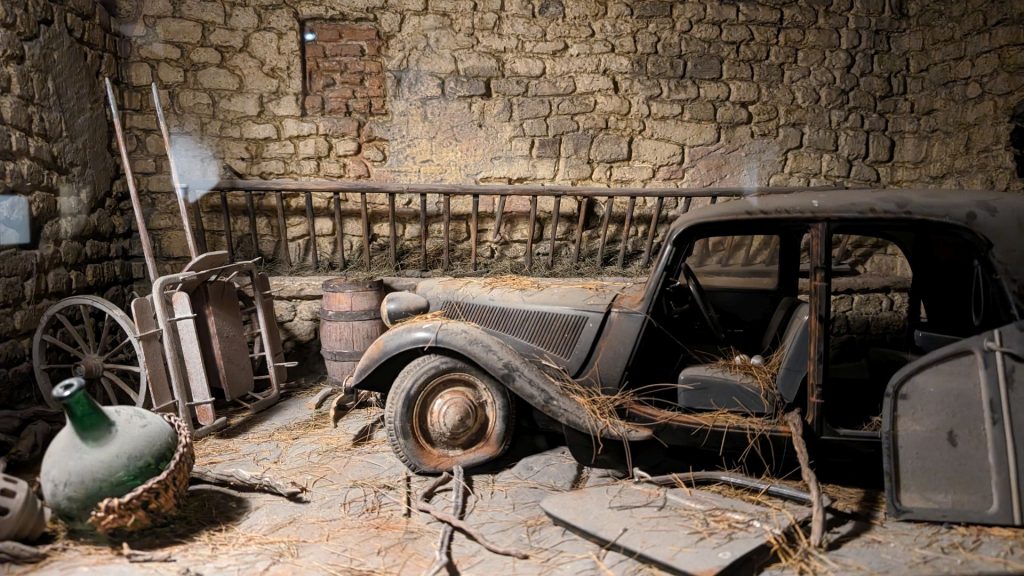
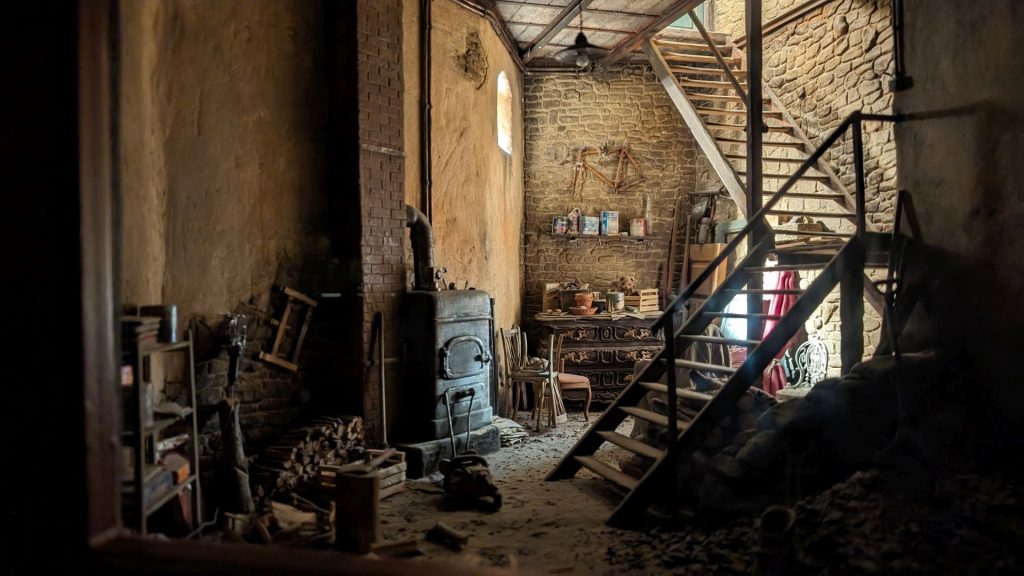
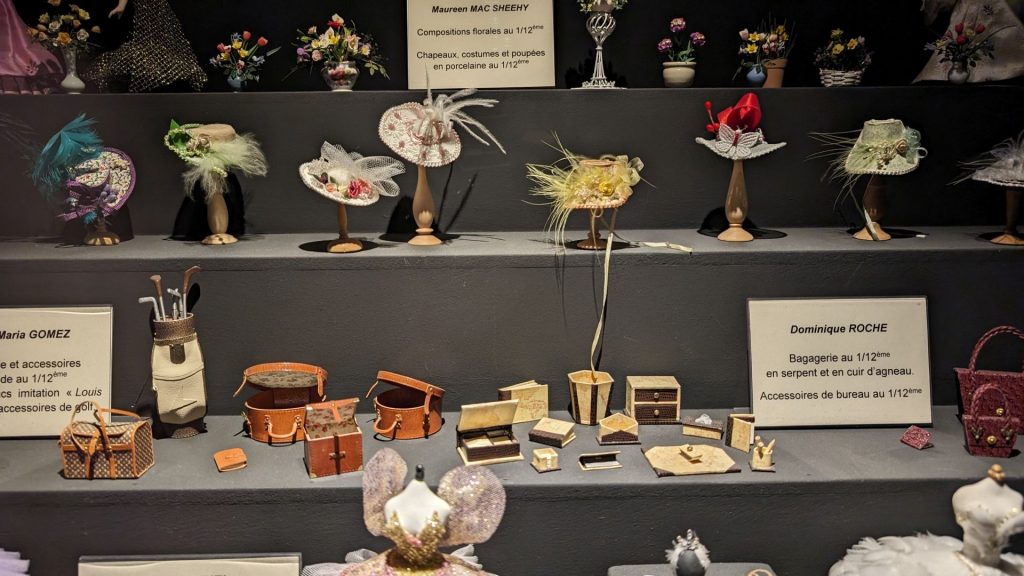
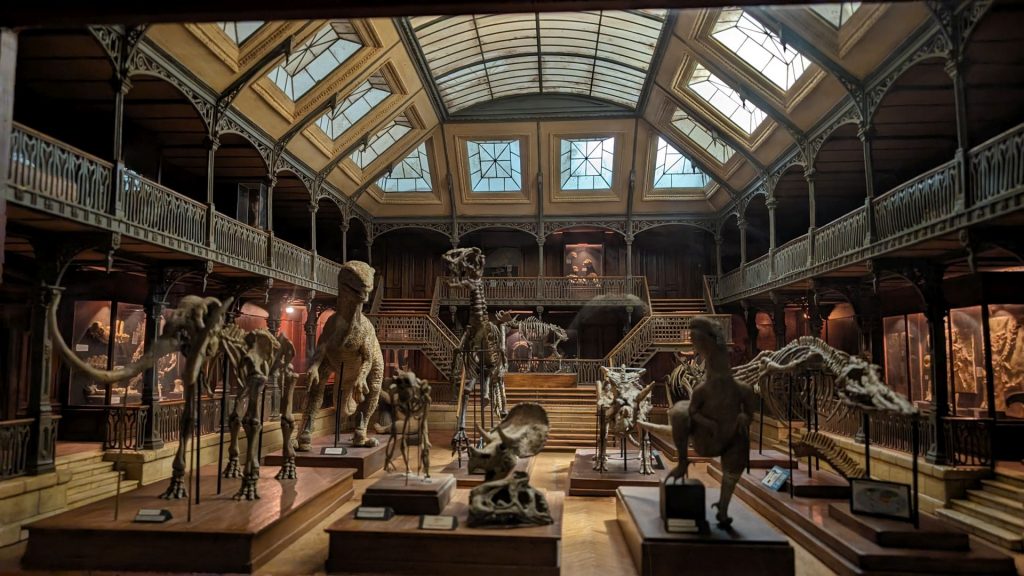
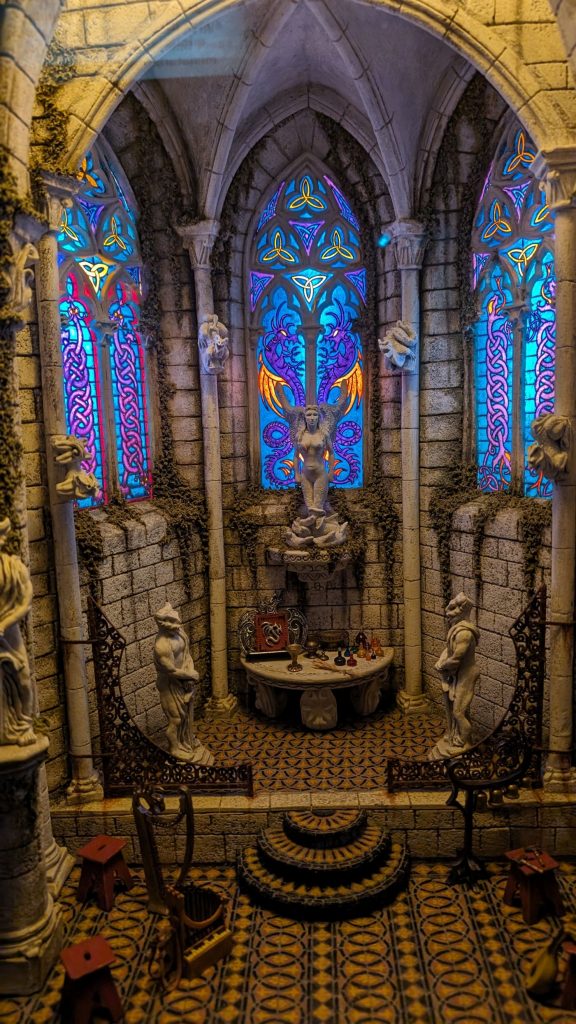
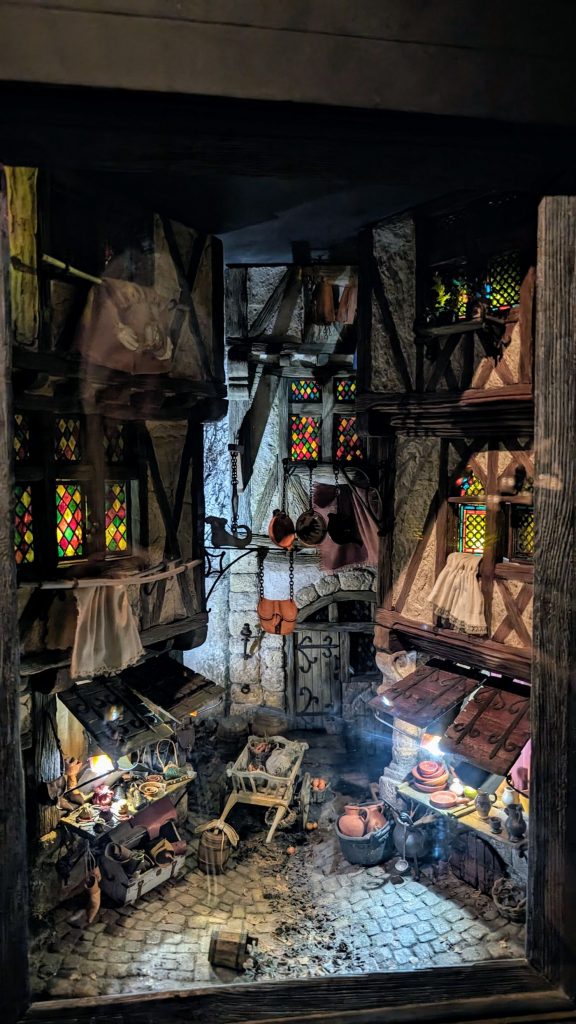
Pictures from the end of our day:
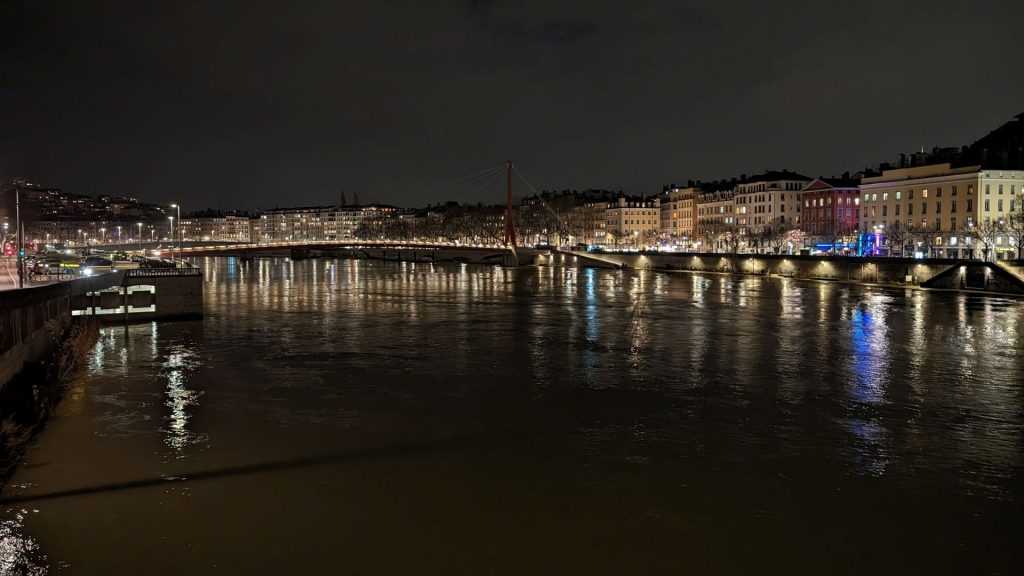
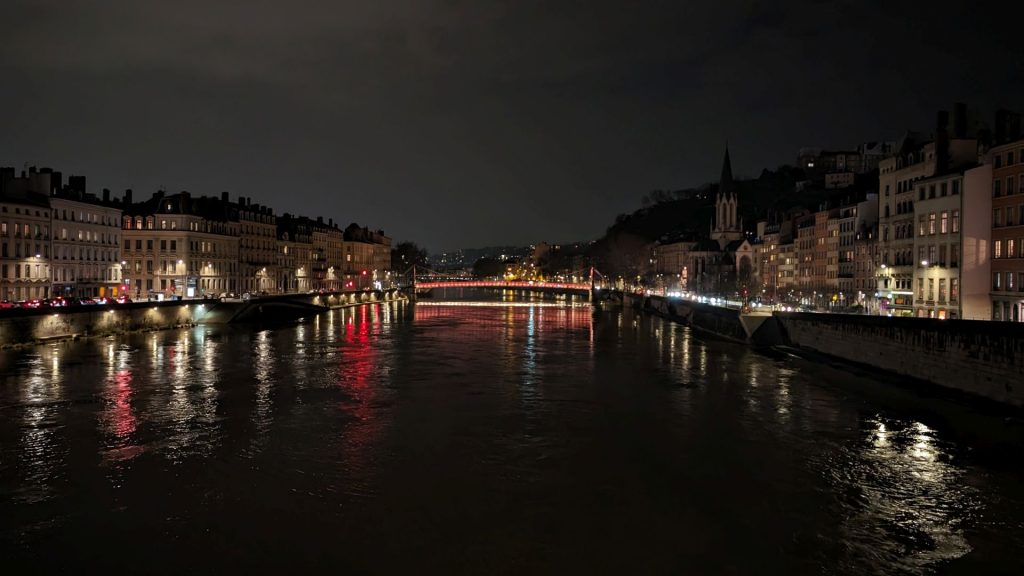
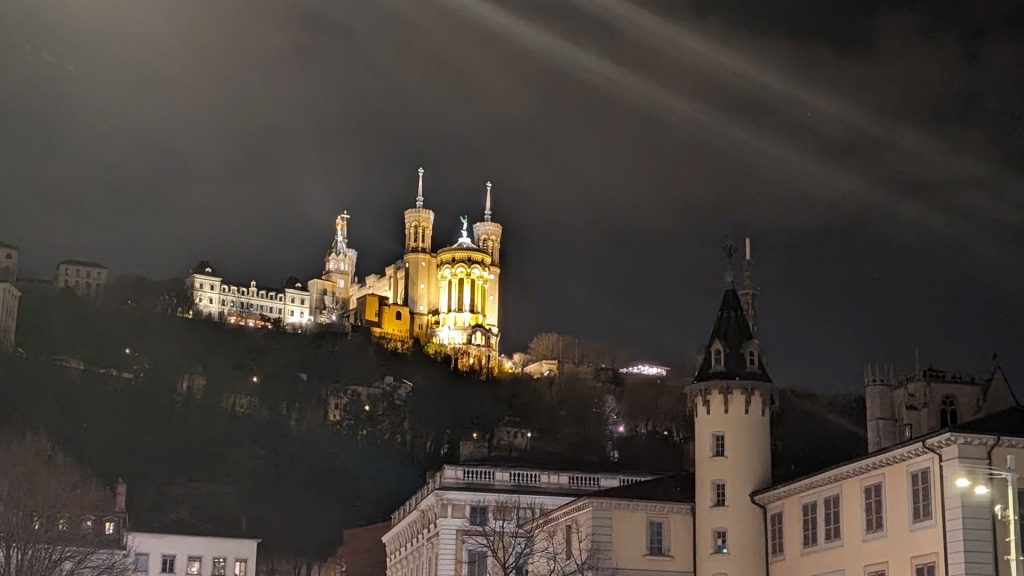
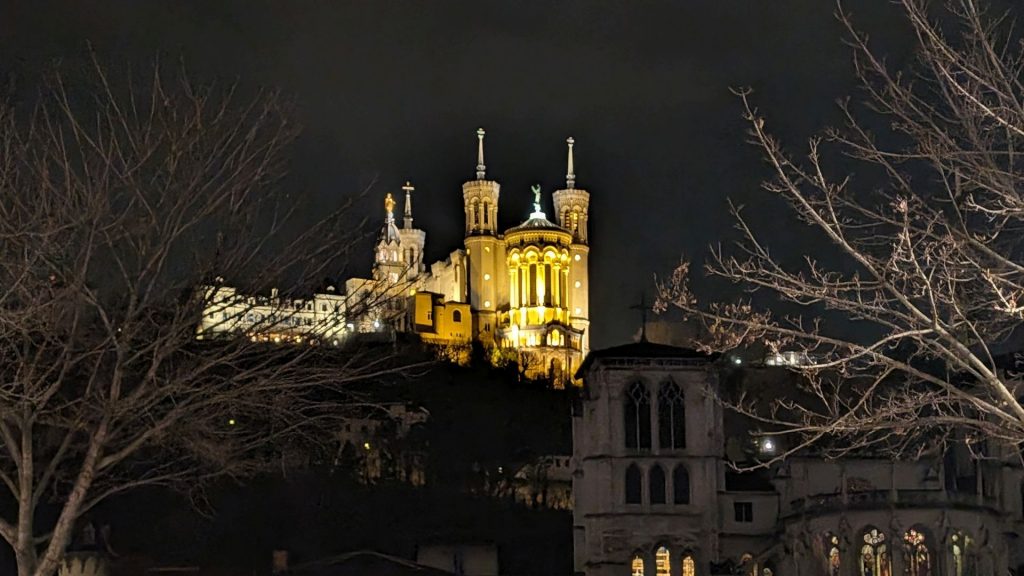
And now, time for the quiz! Setup: In order to create a prosthetic make-up or a mask, special make-up effects artists need the actor’s face to start working. They first take a lifecast of the face, from which they create a plaster replica. This allows them to sculpt, usually using plasticine, a prosthetic make-up or mask that will perfectly fit the actor’s facial features. The finished pieces will be cast in foam latex or silicone.
Can you name these 11 famous actors?
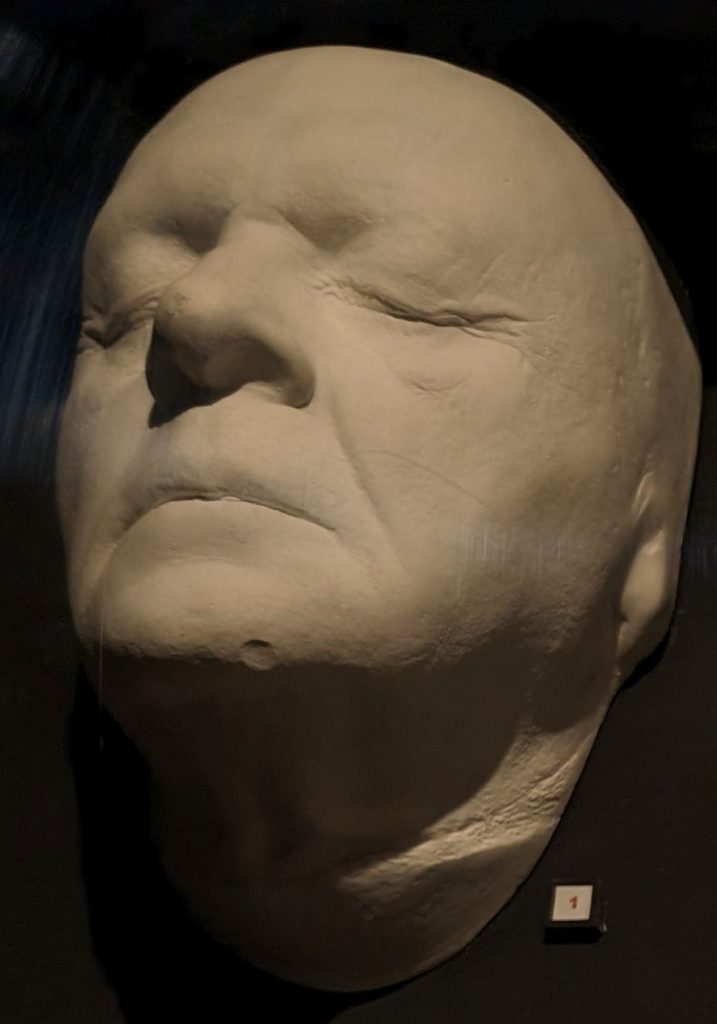
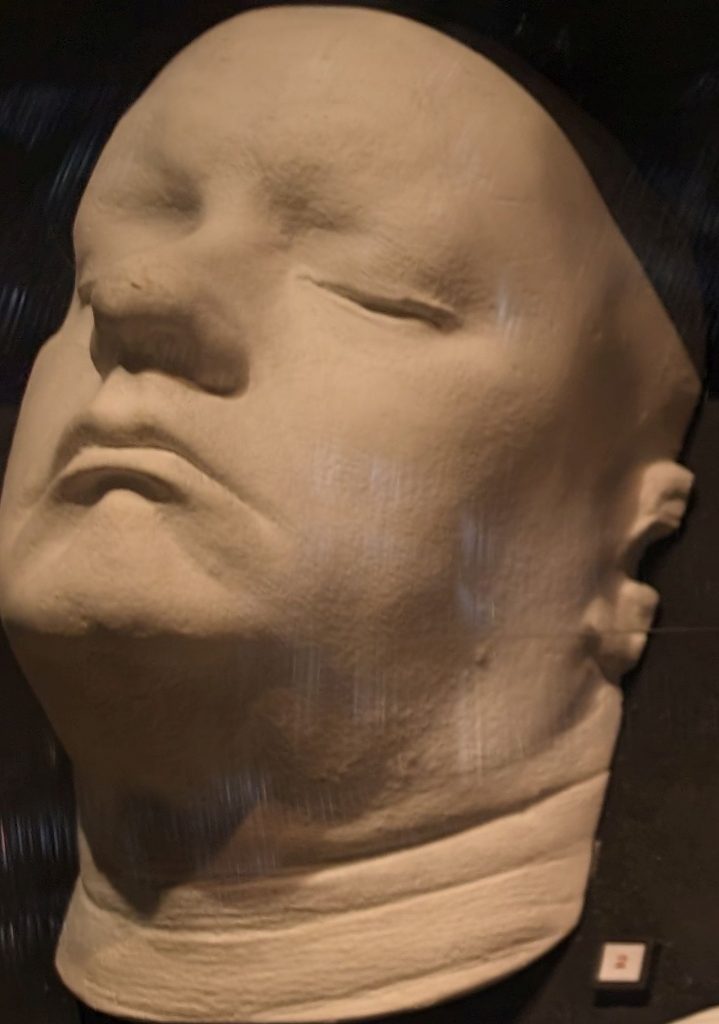
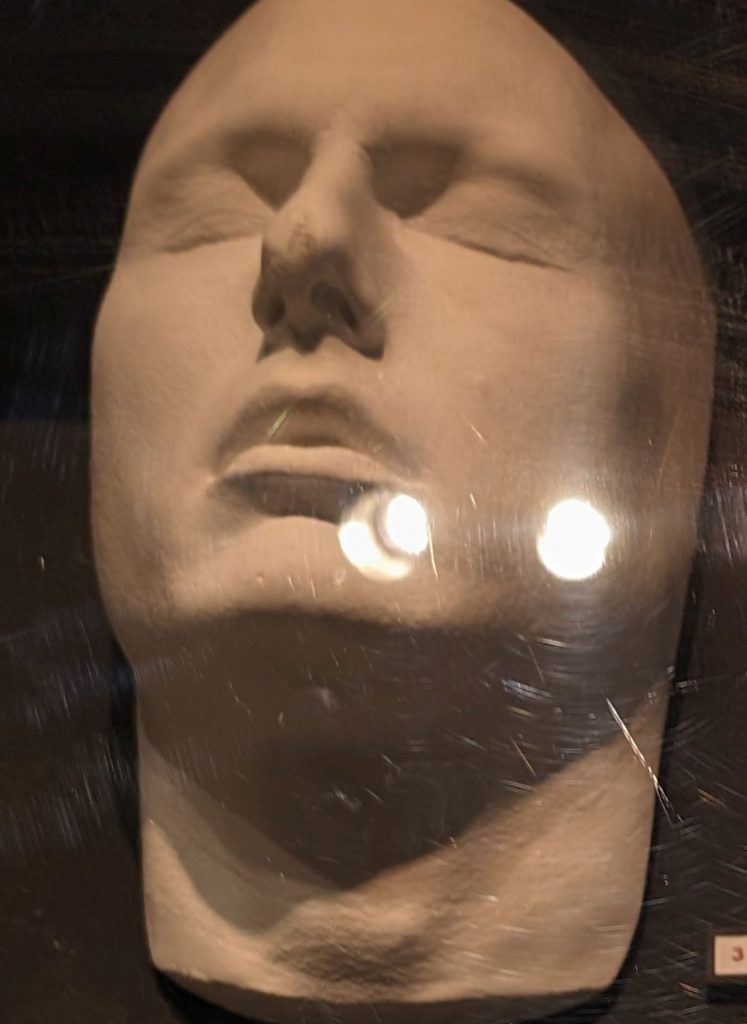
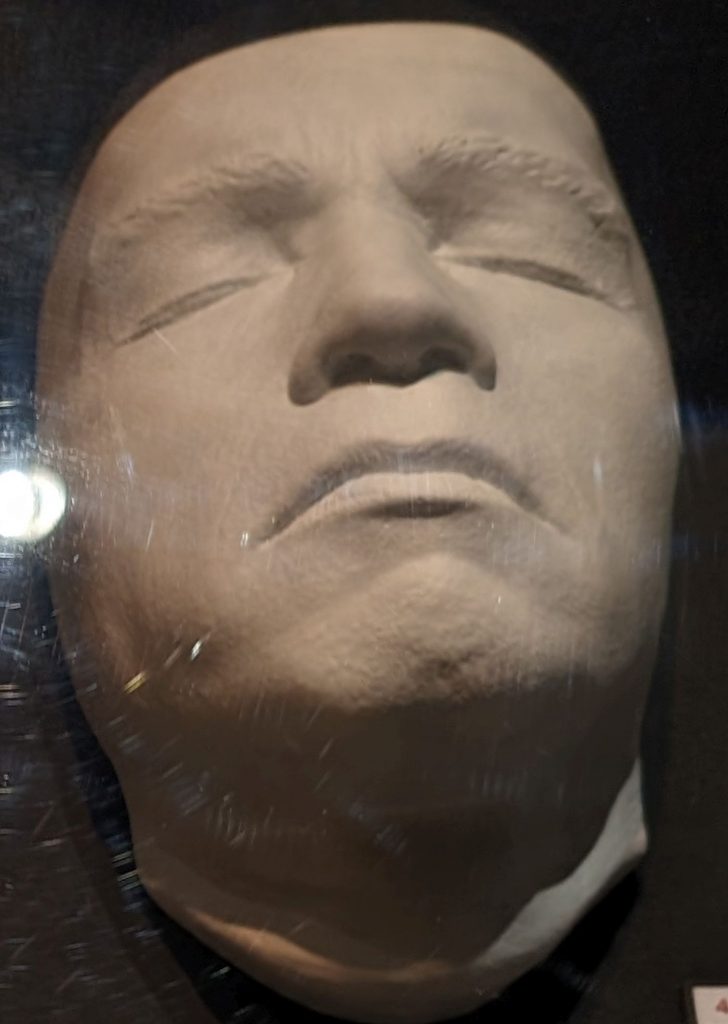
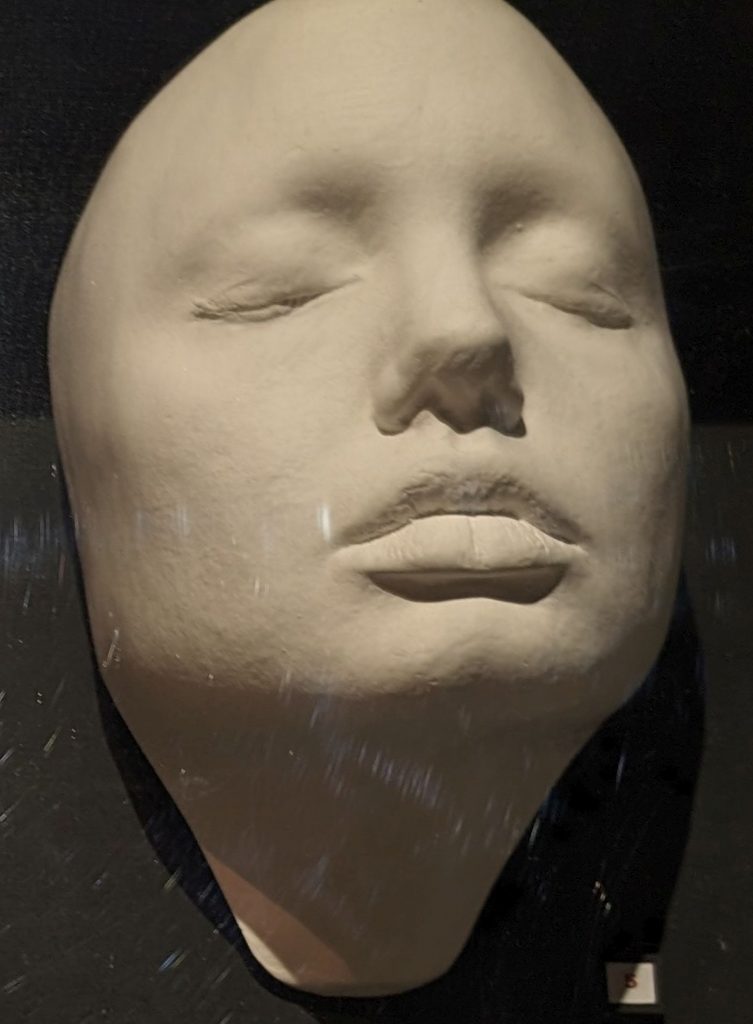
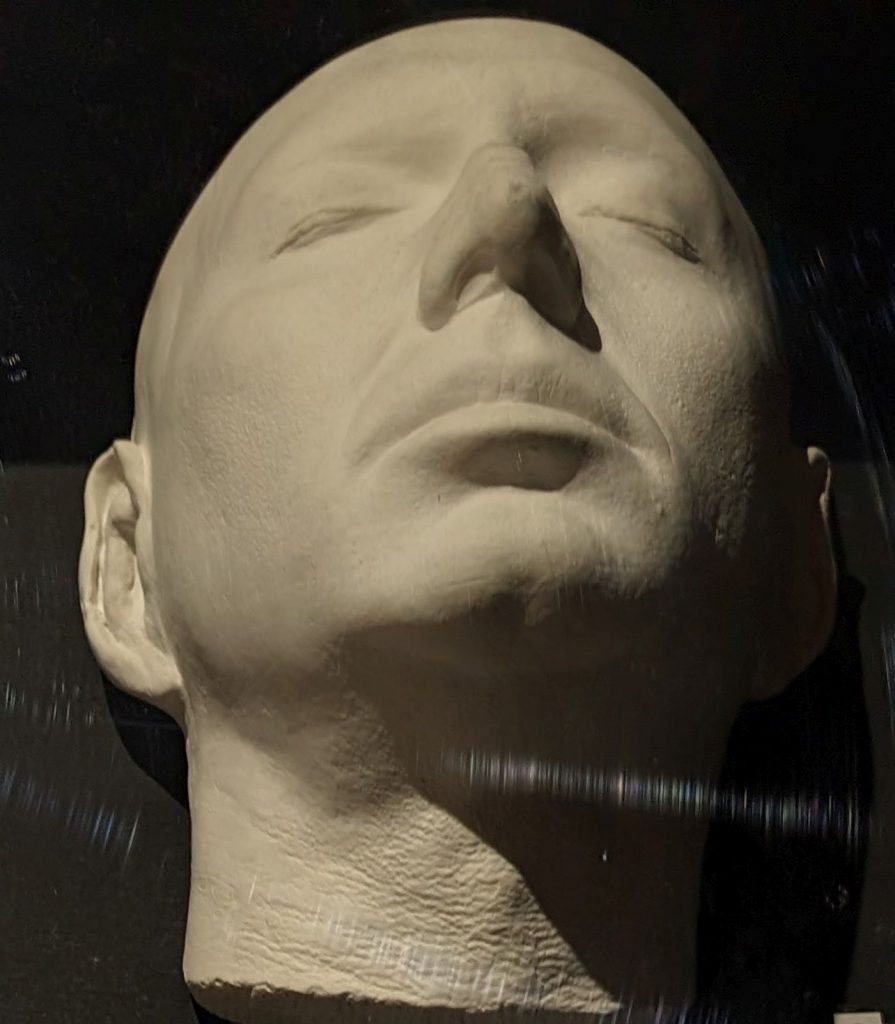
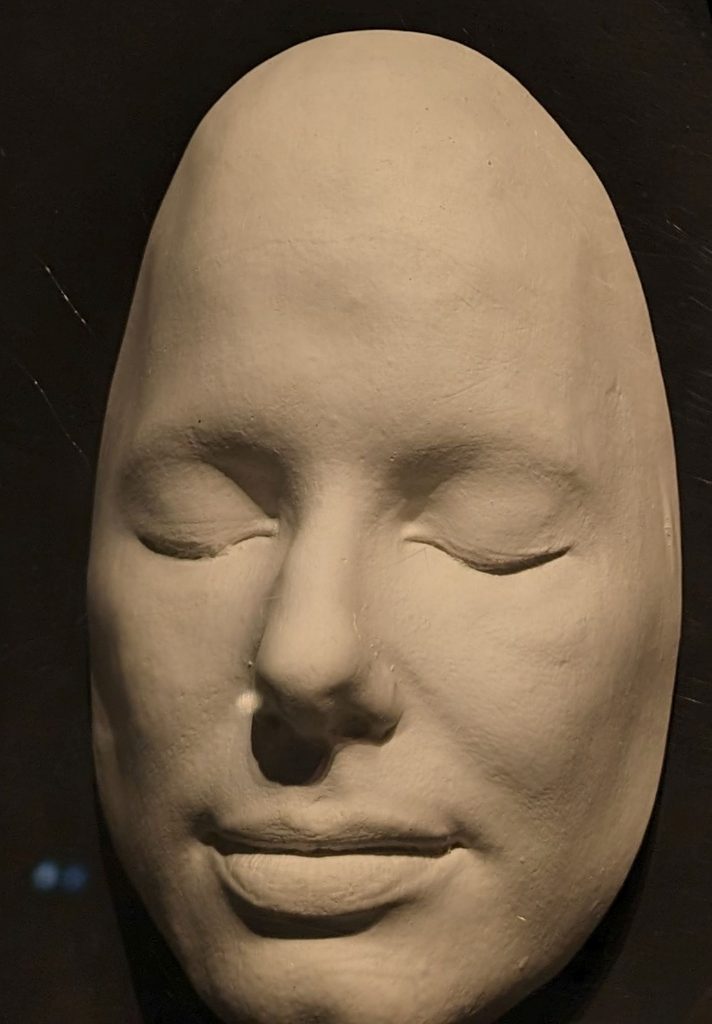
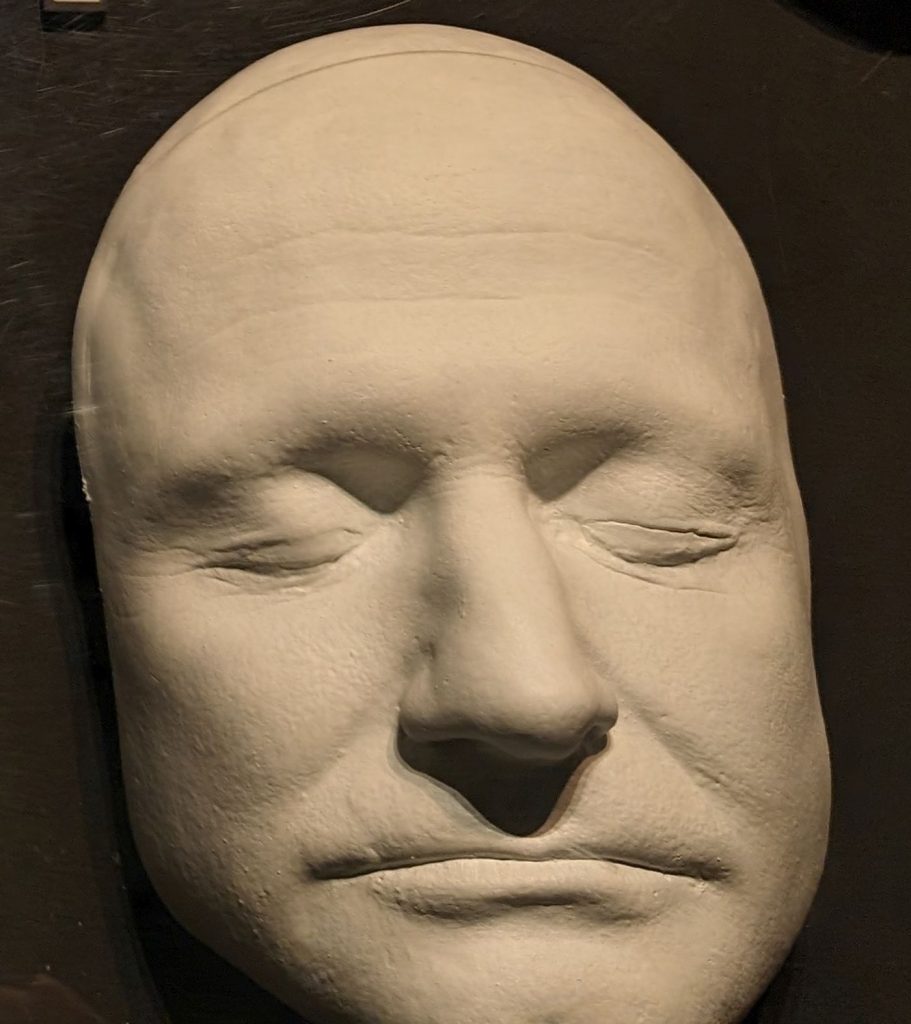
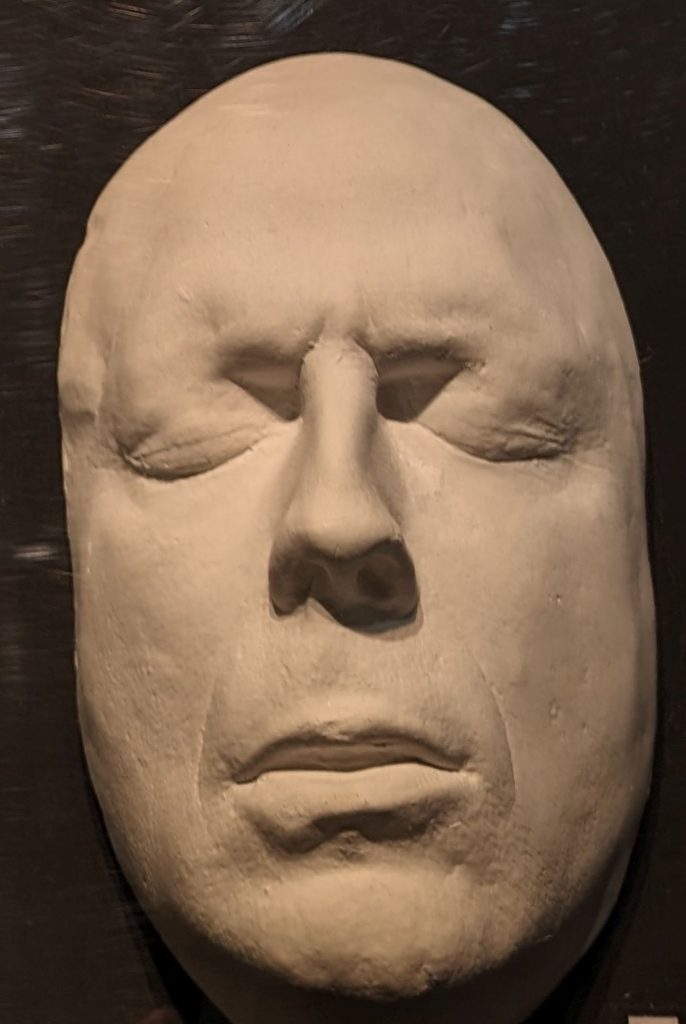
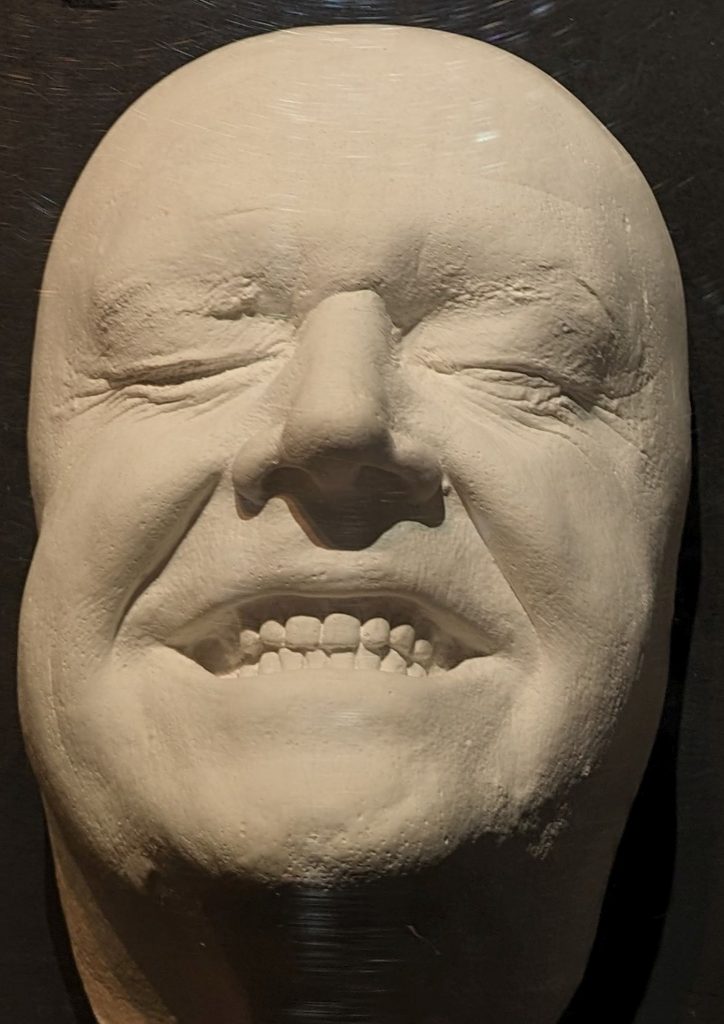
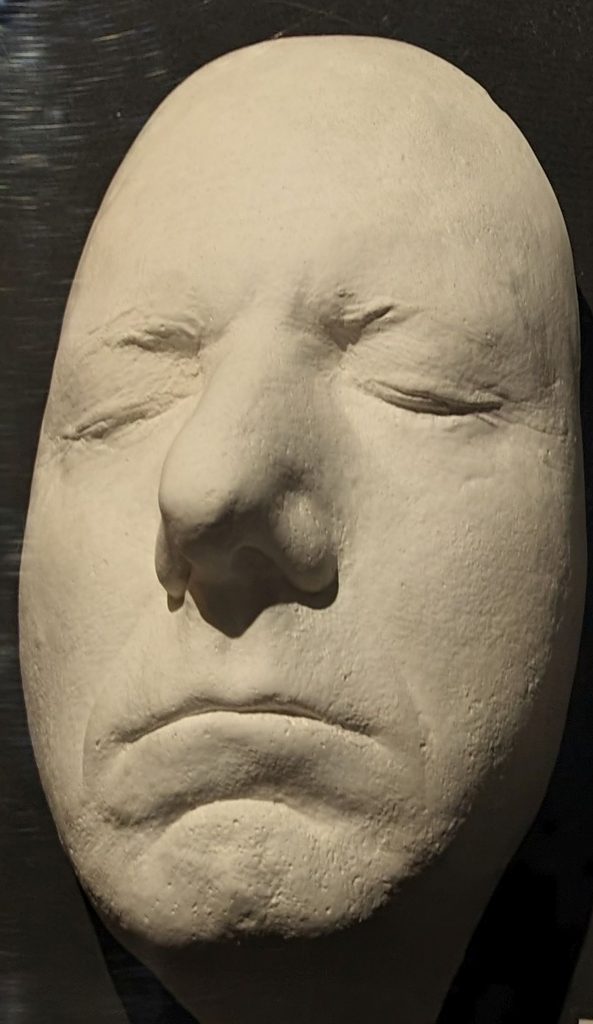
Answers in the next post!
